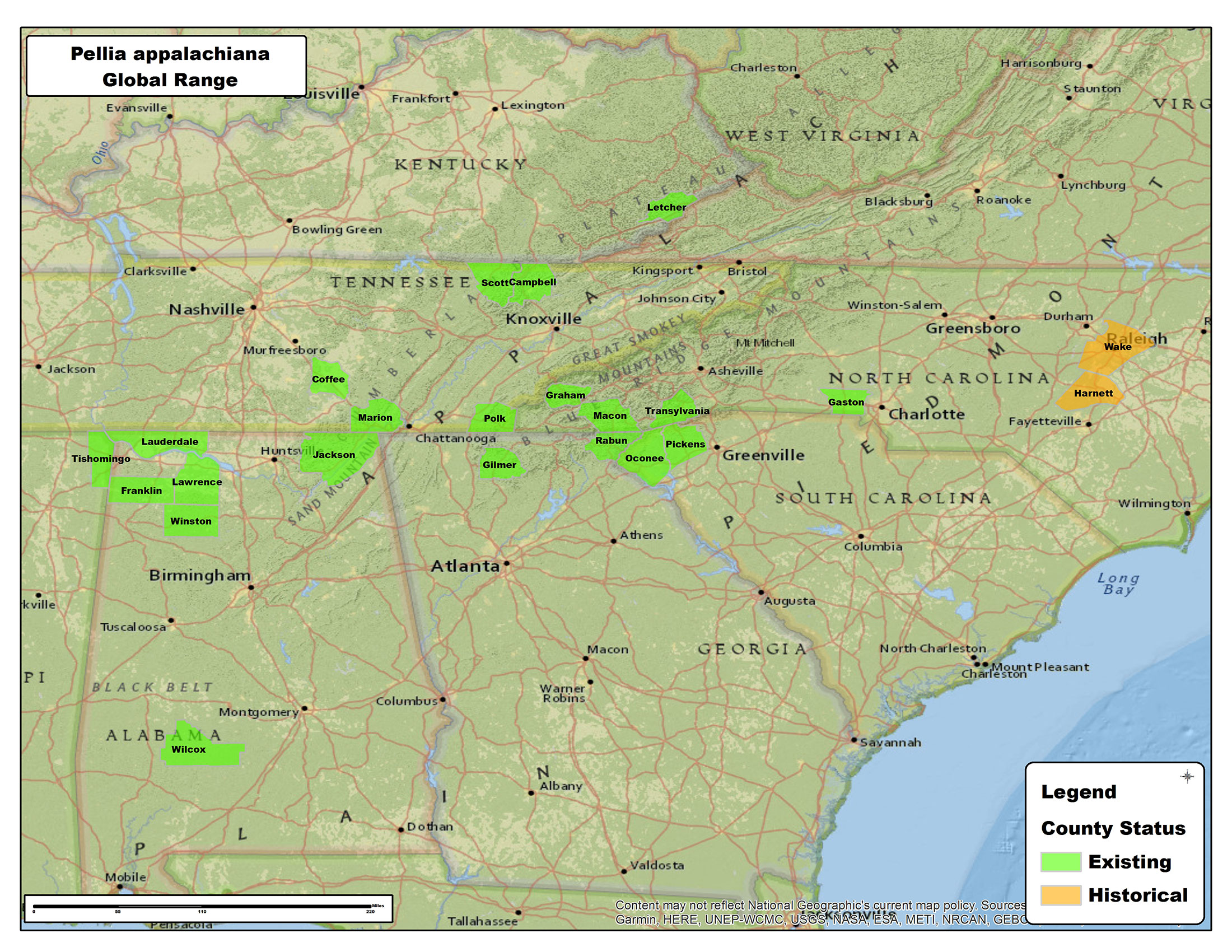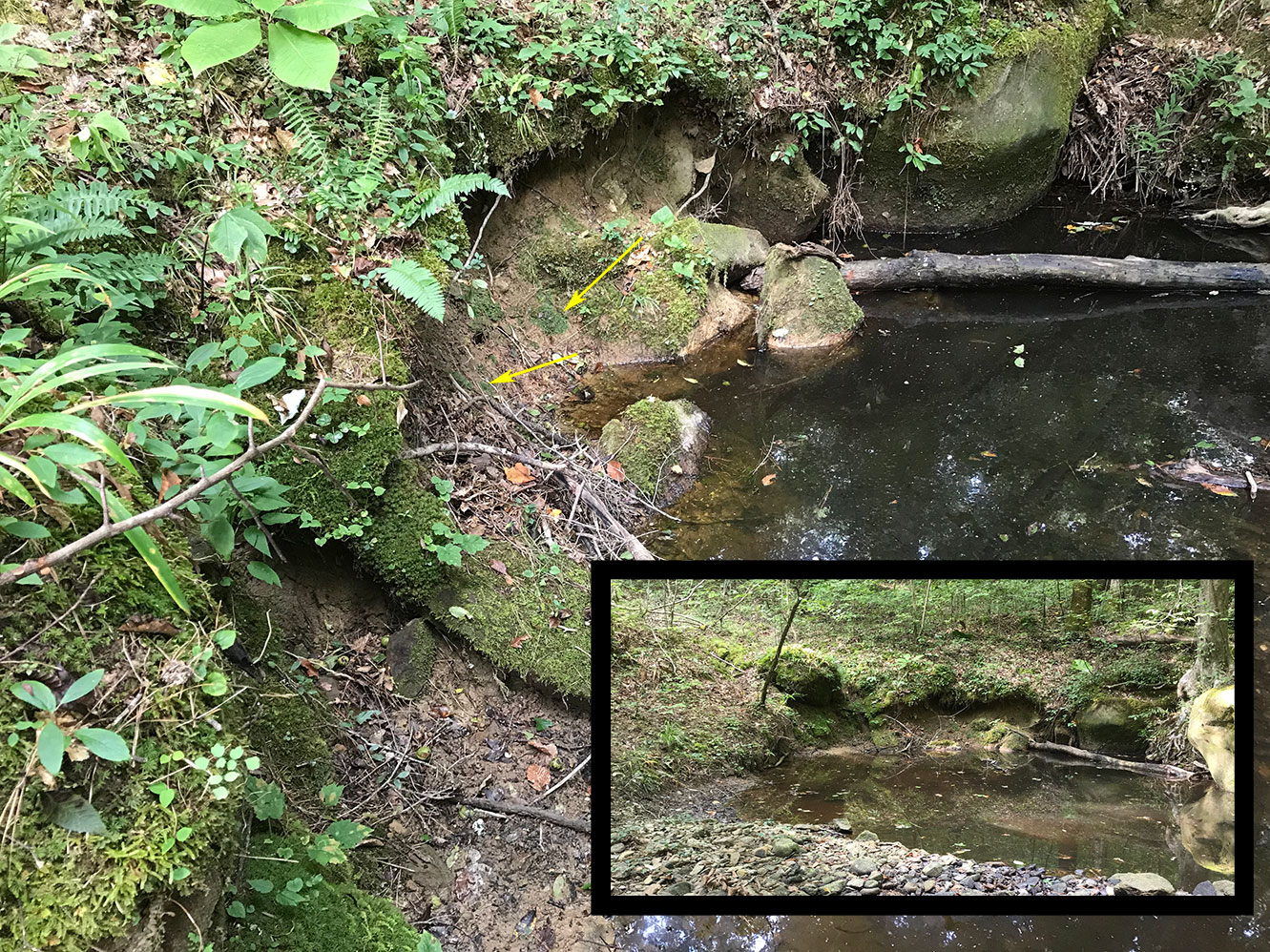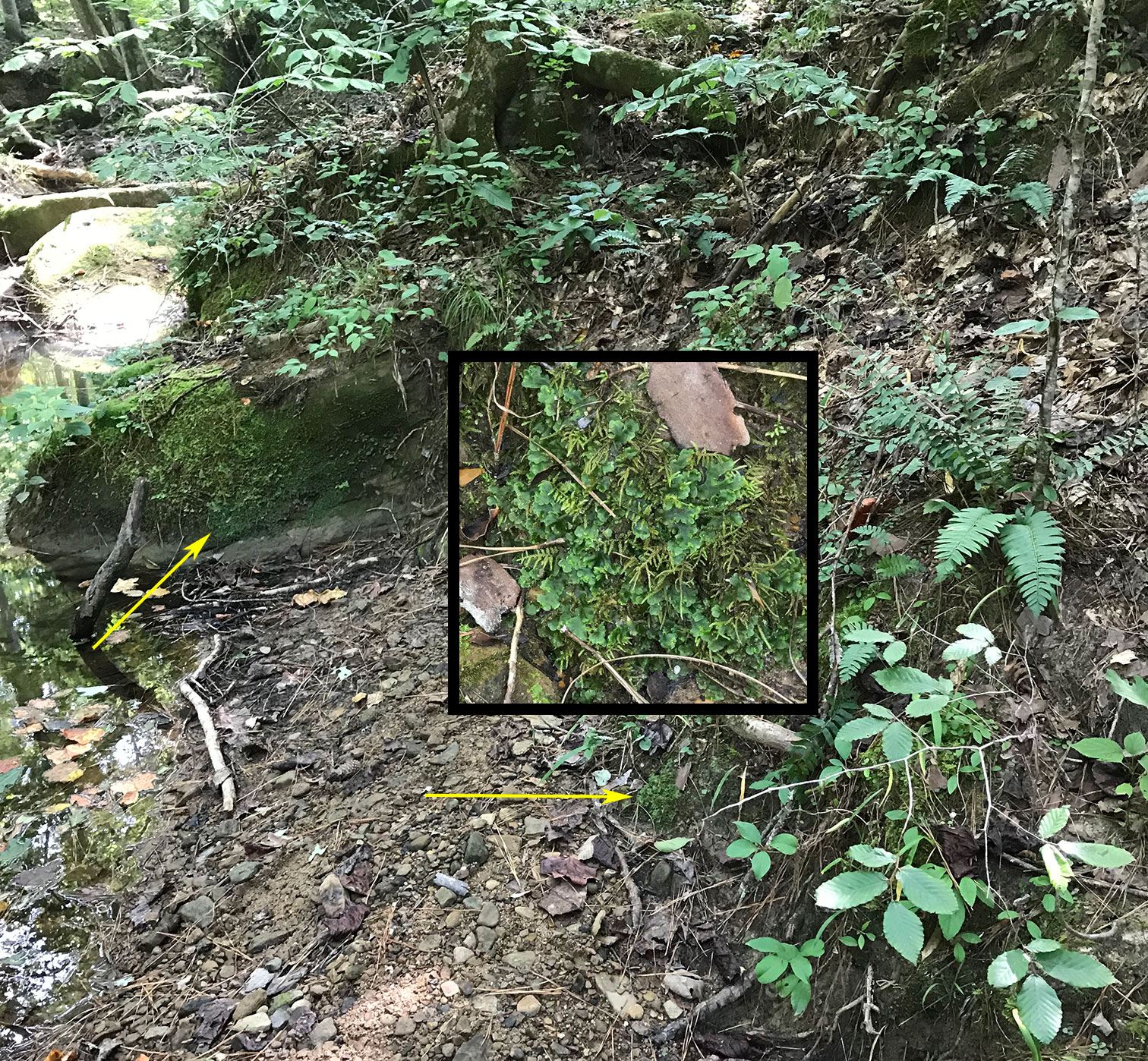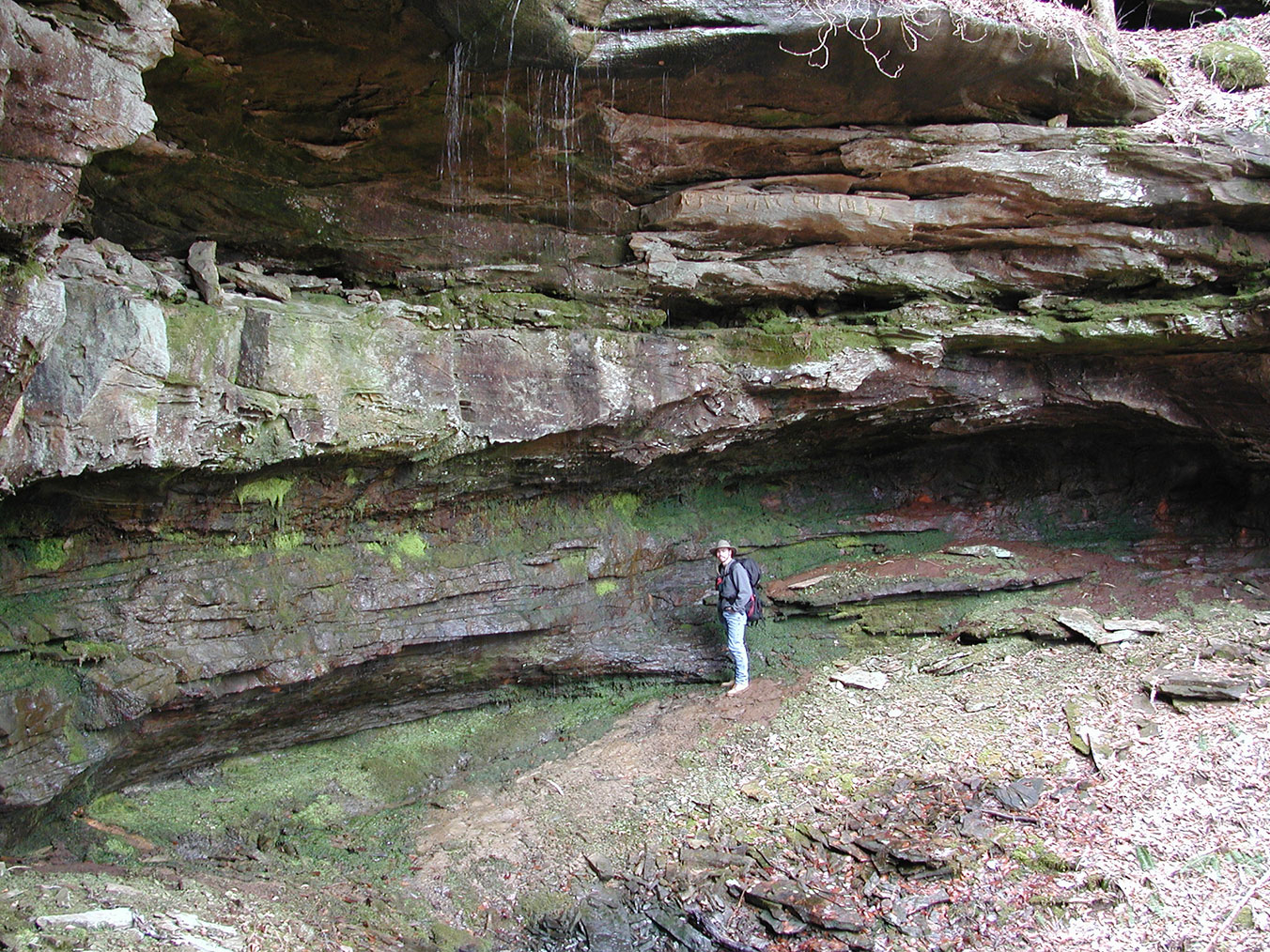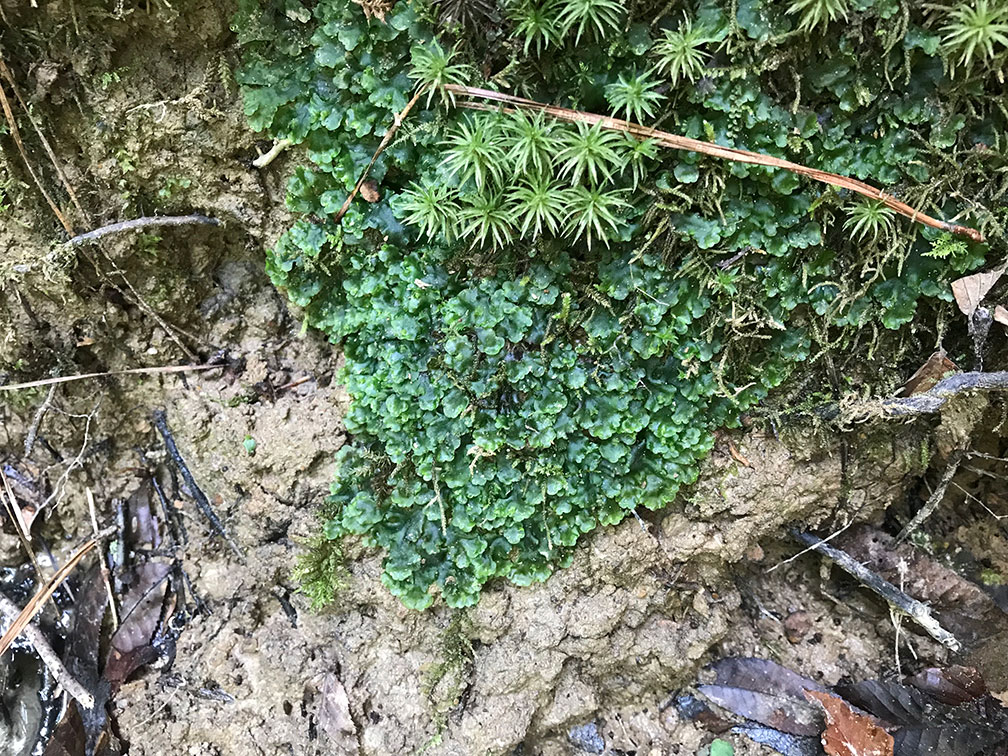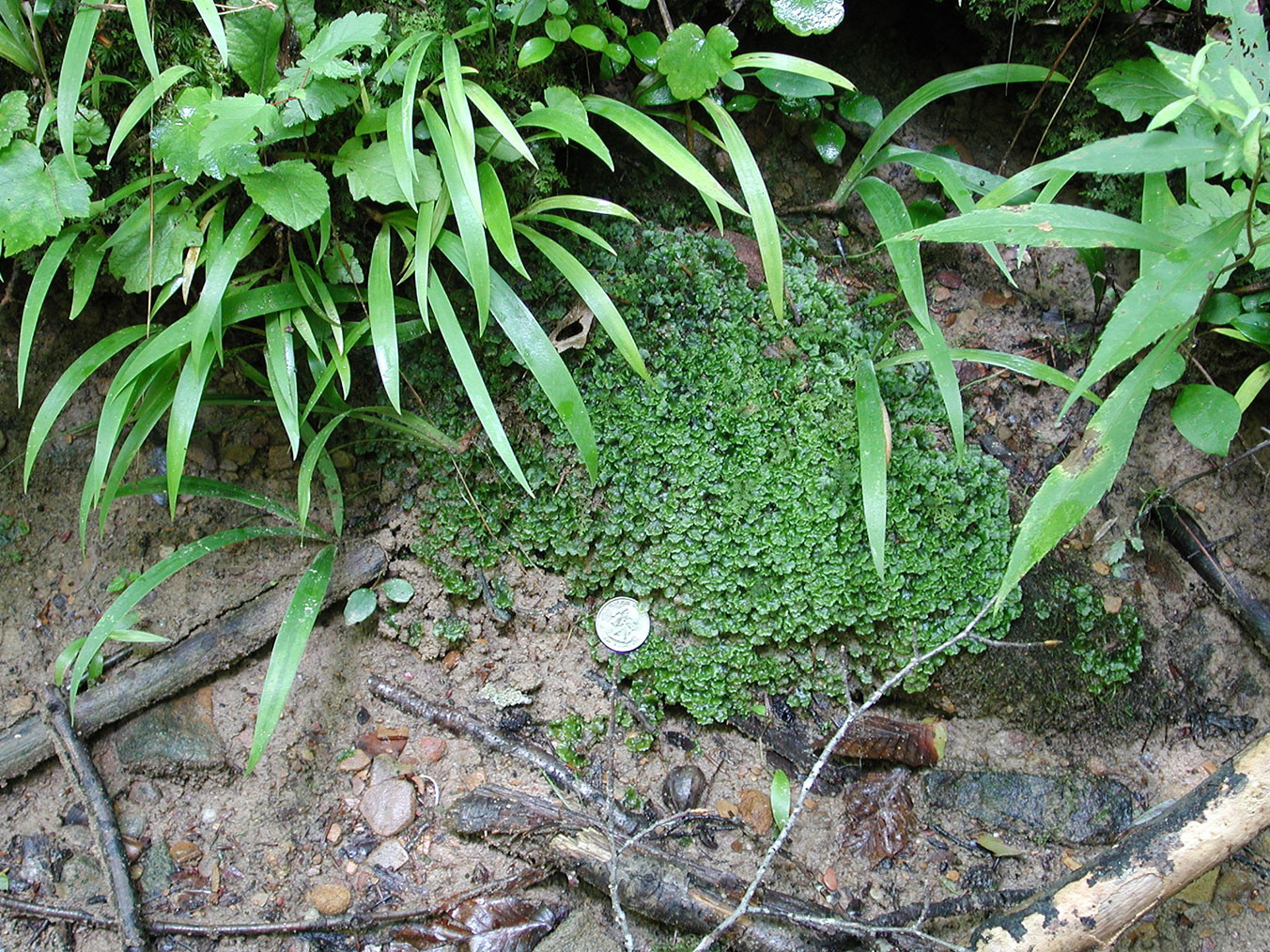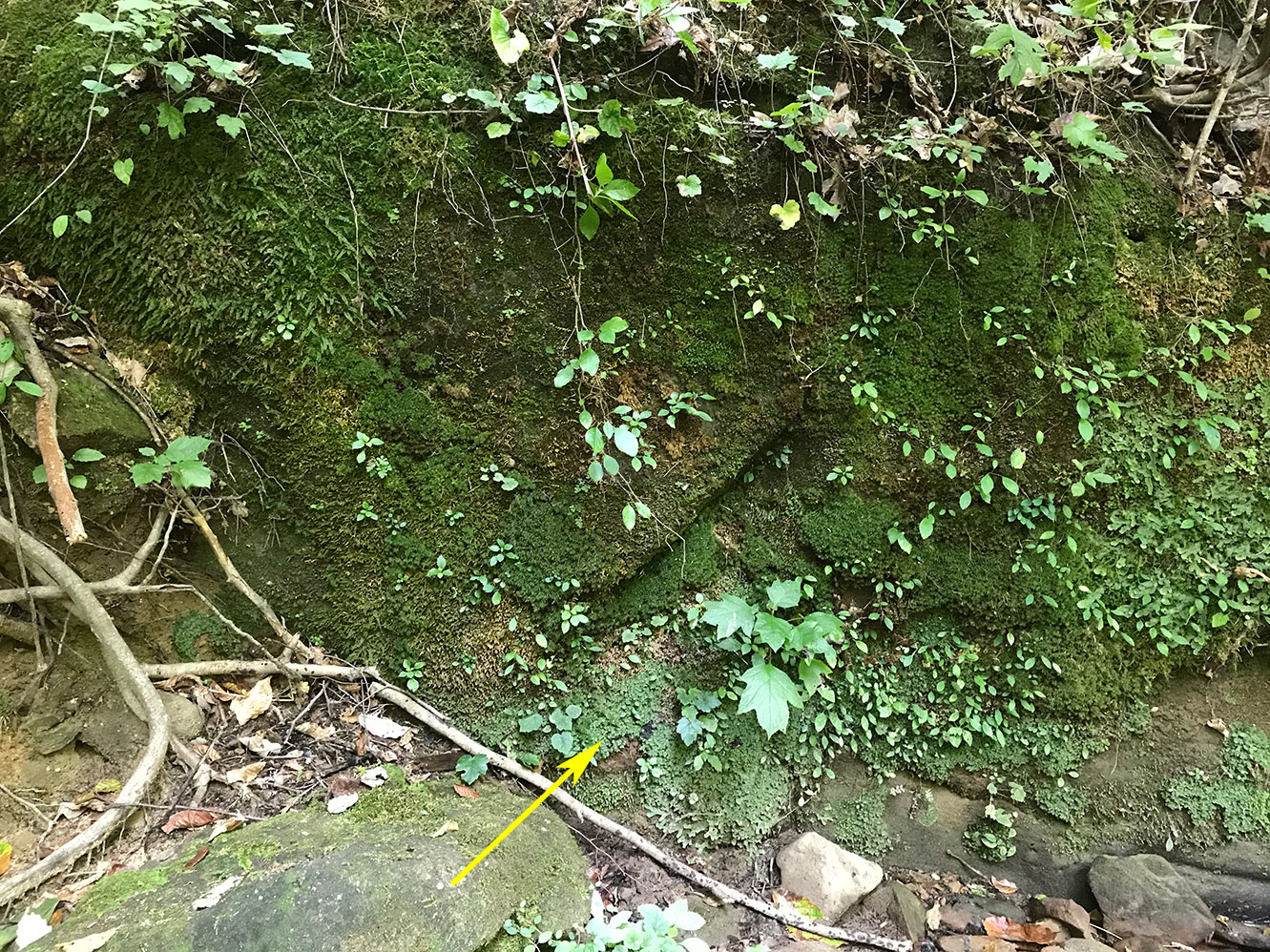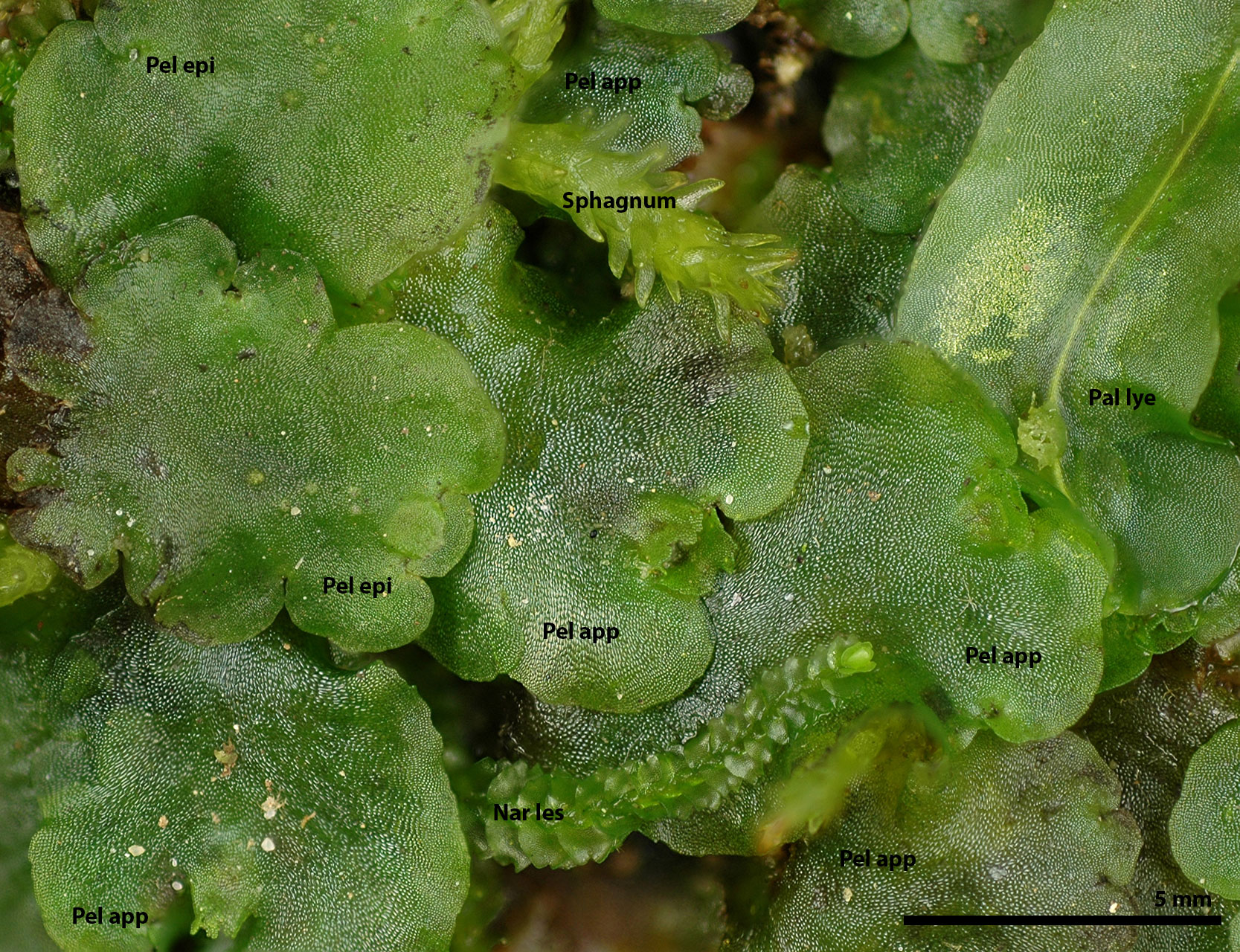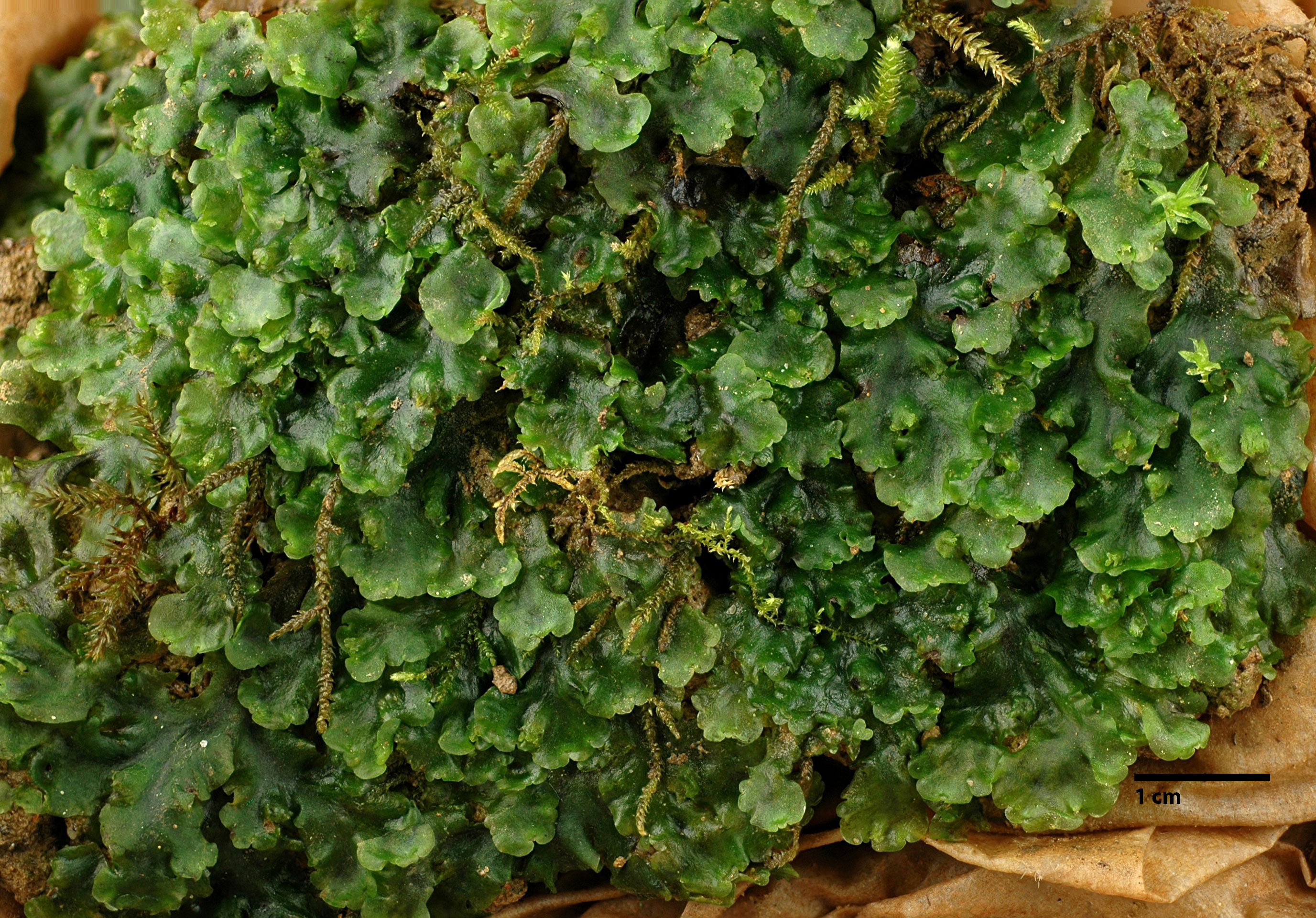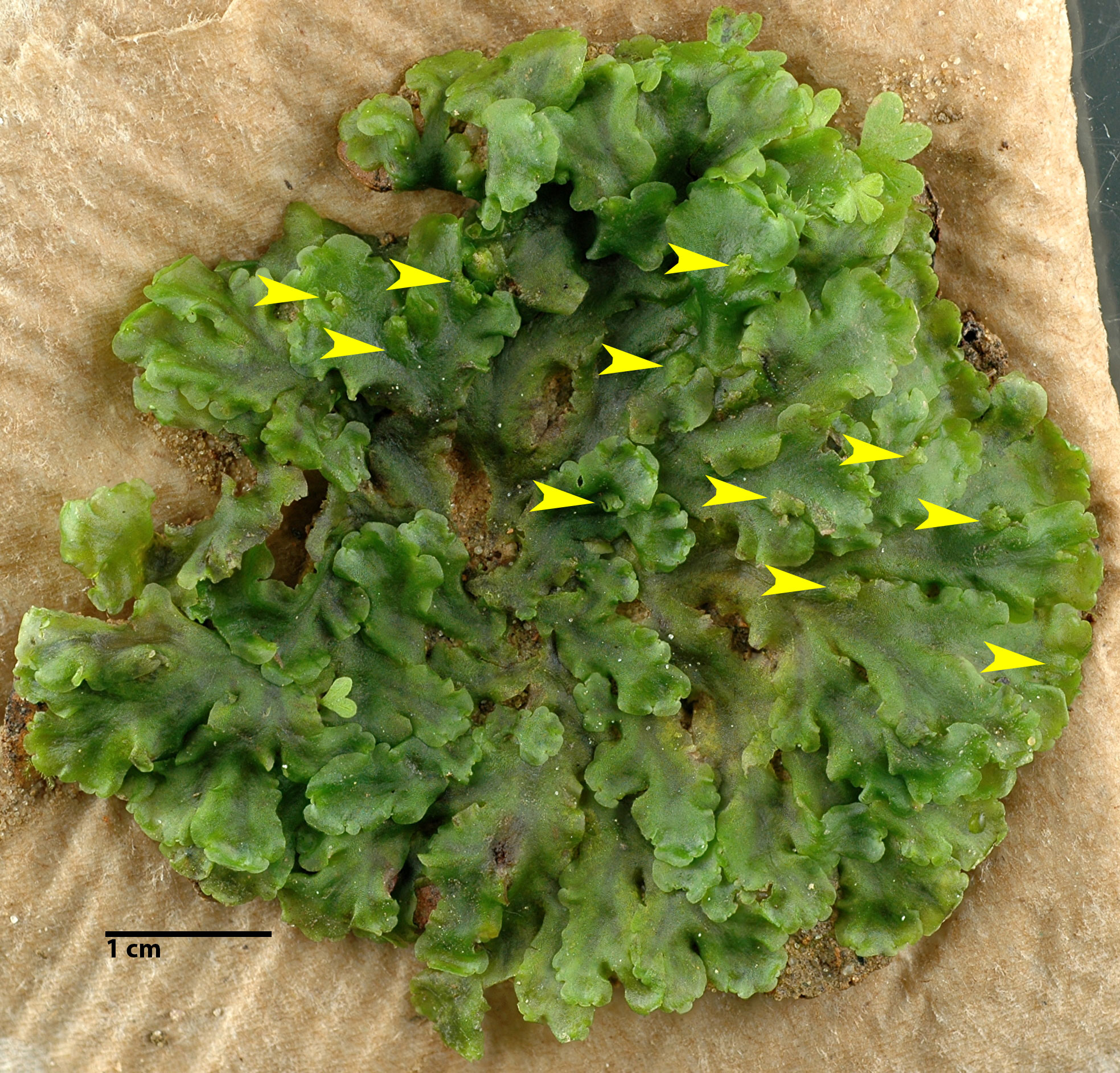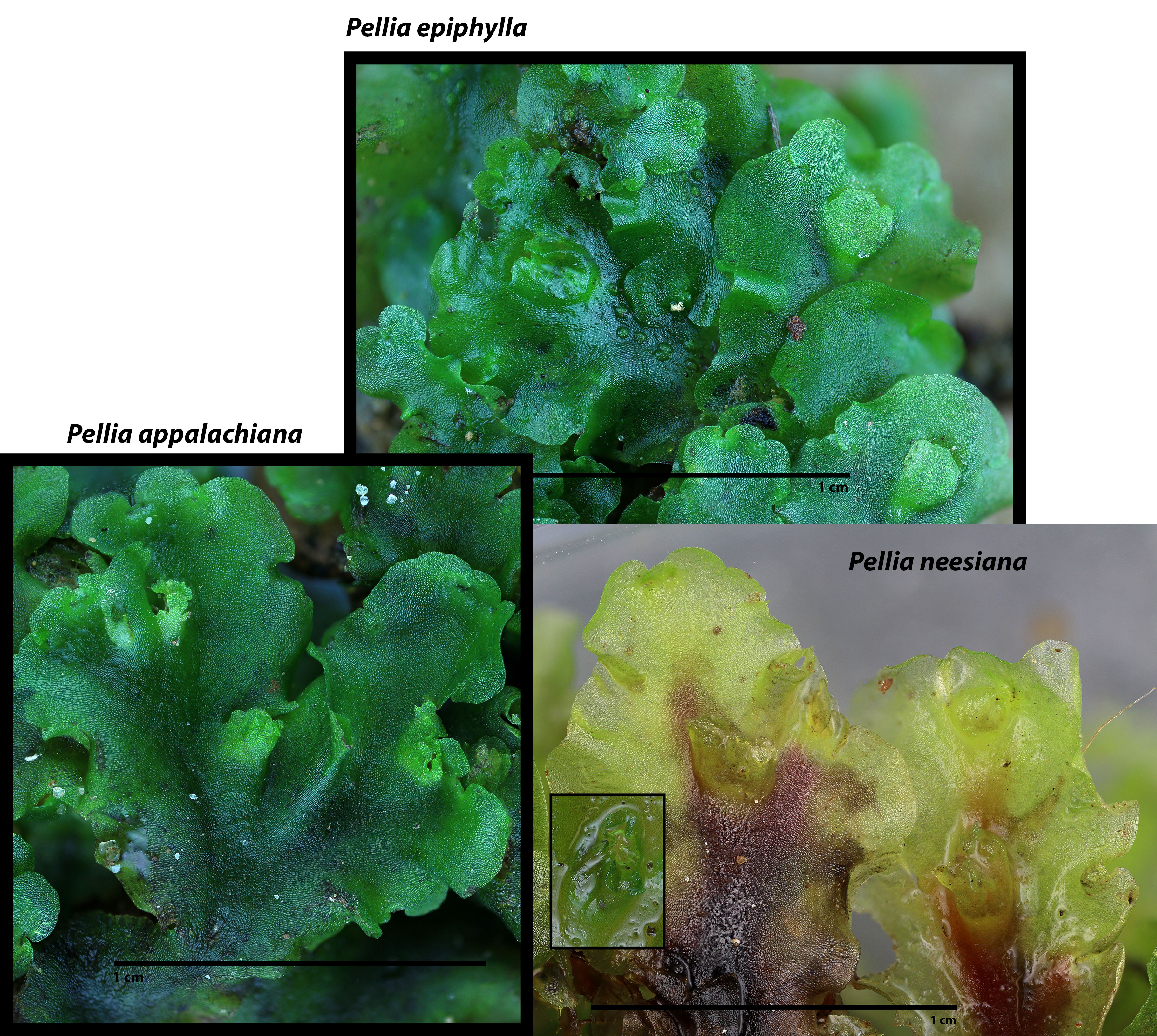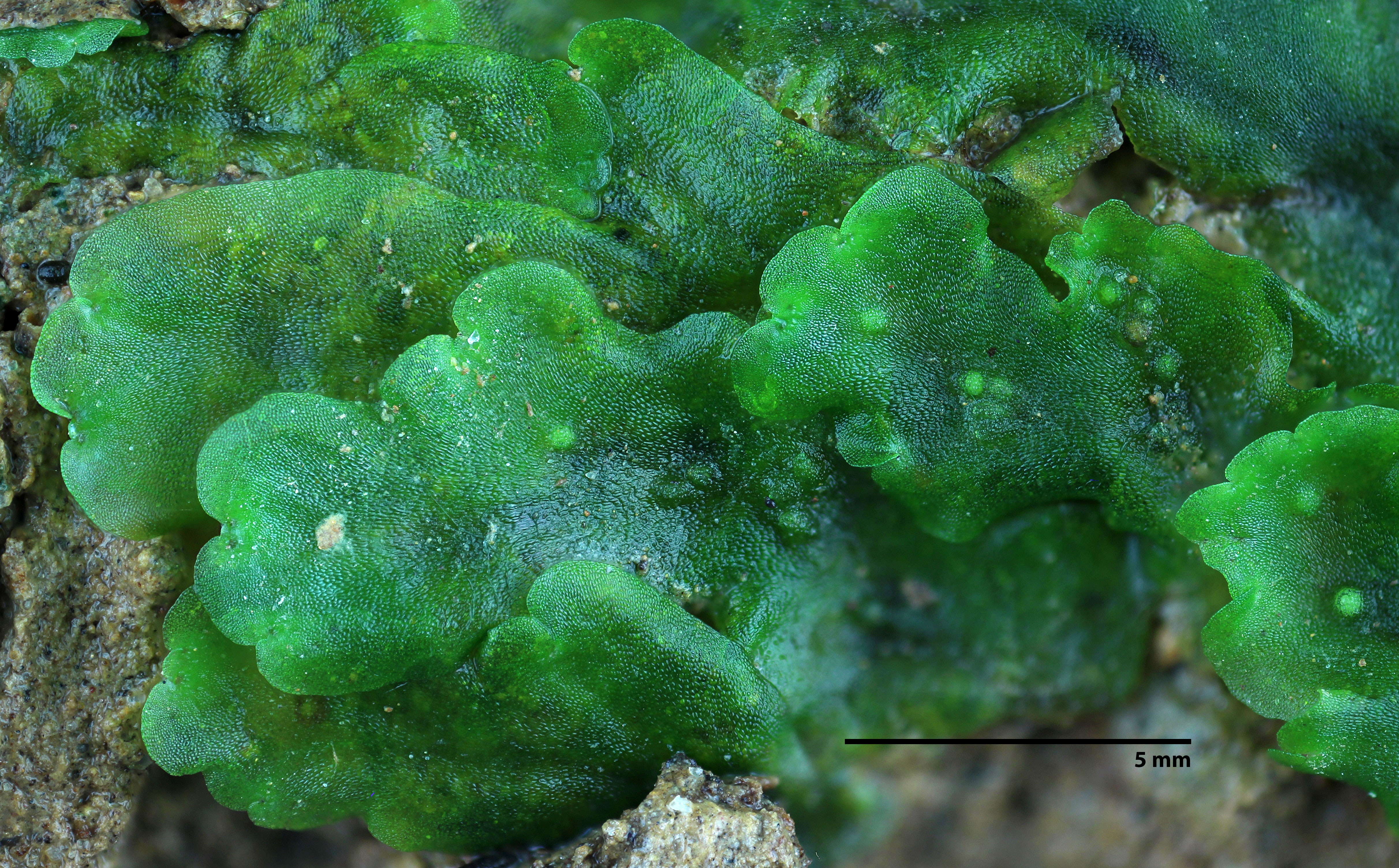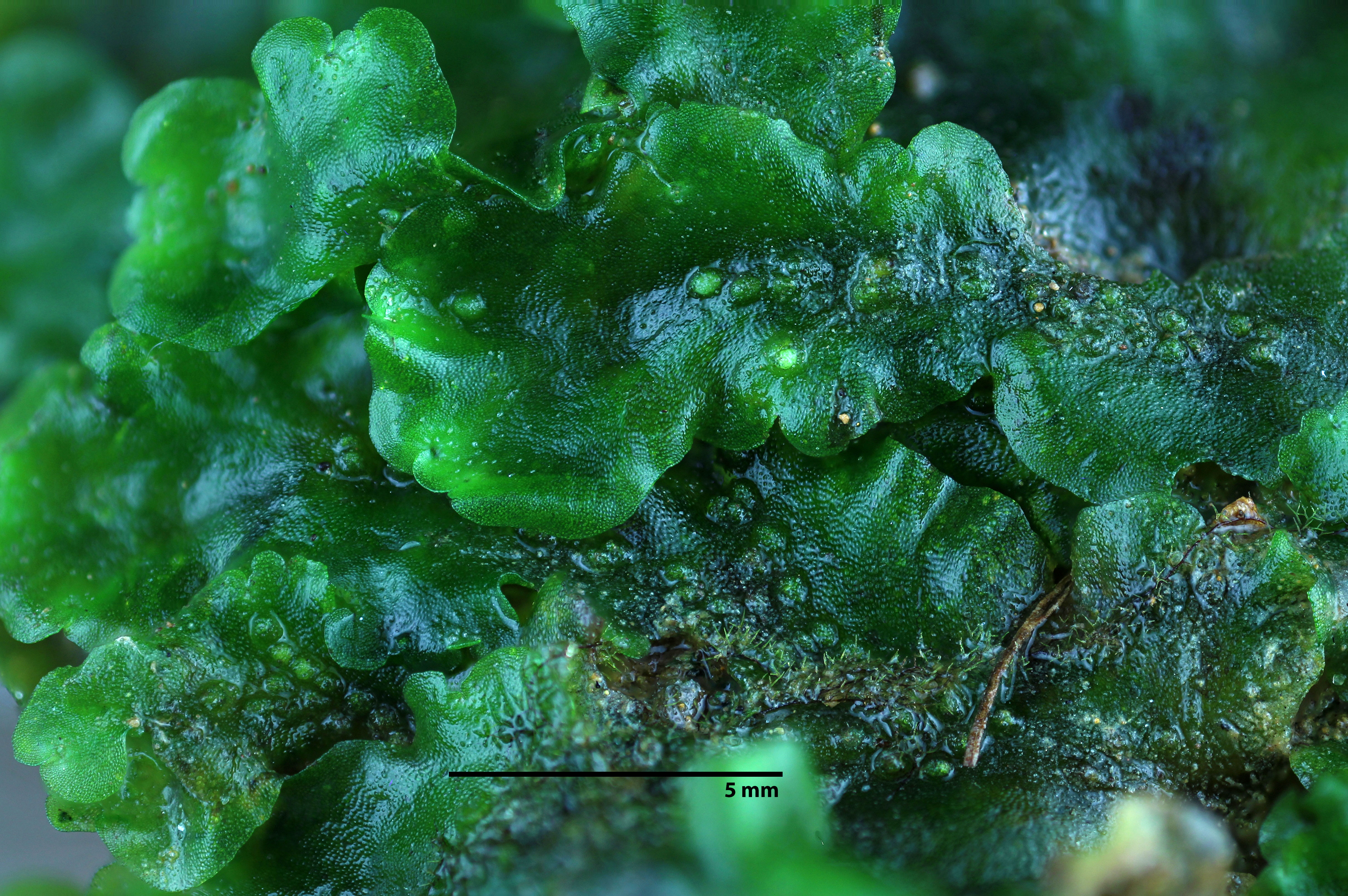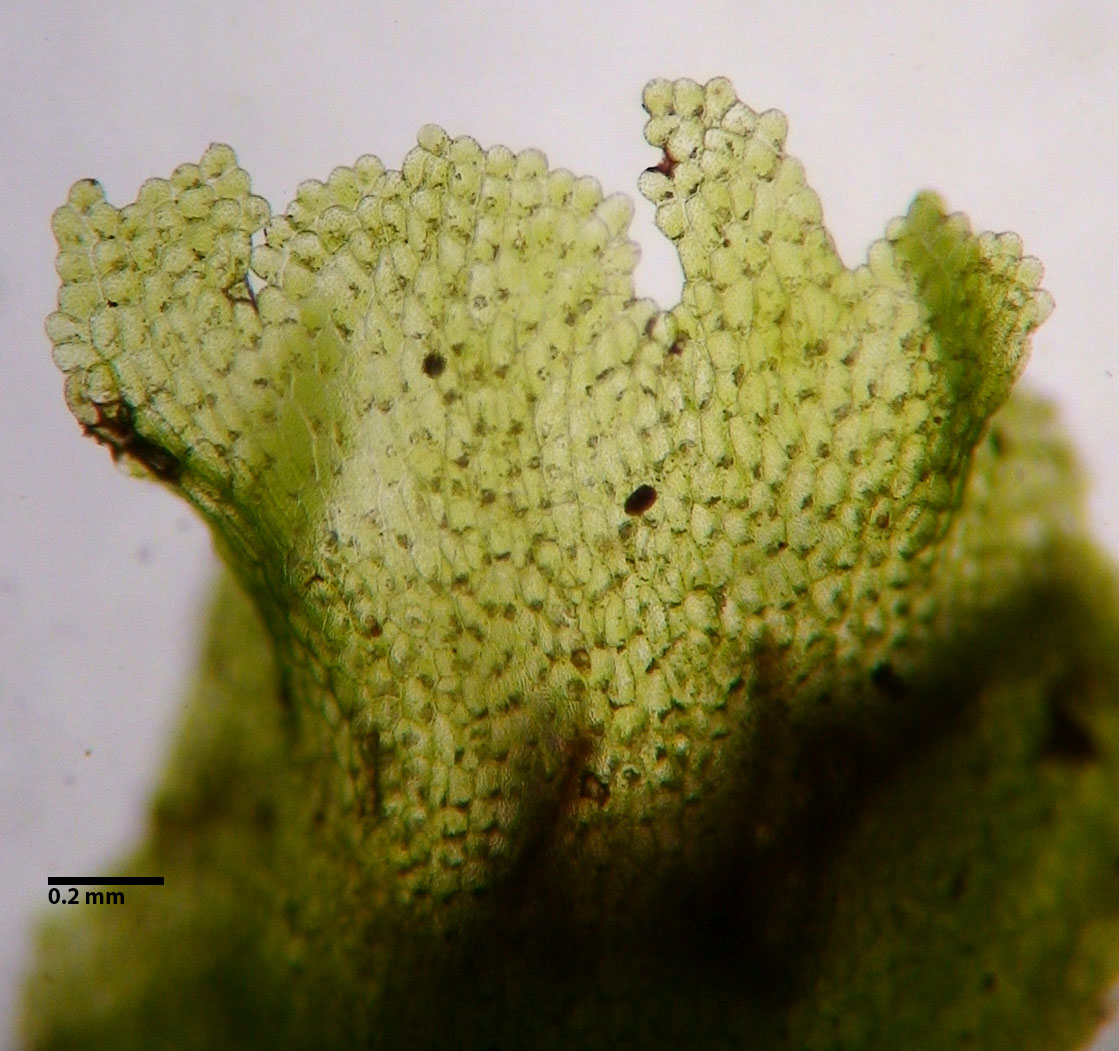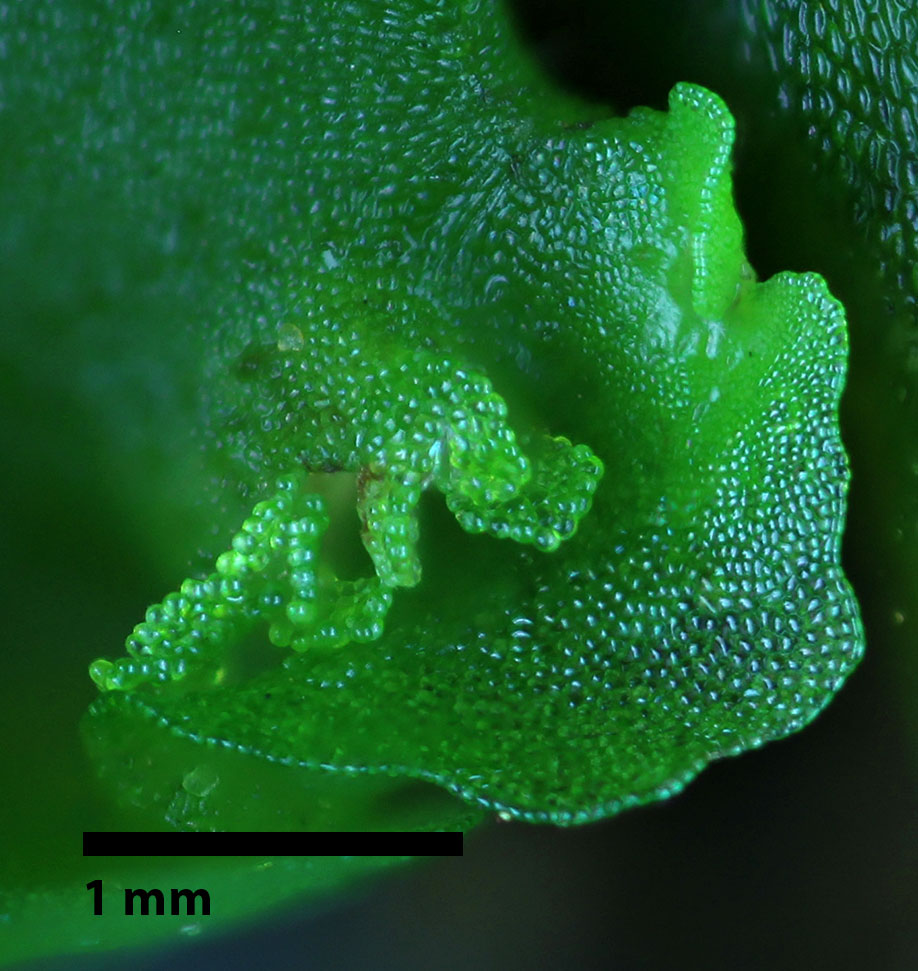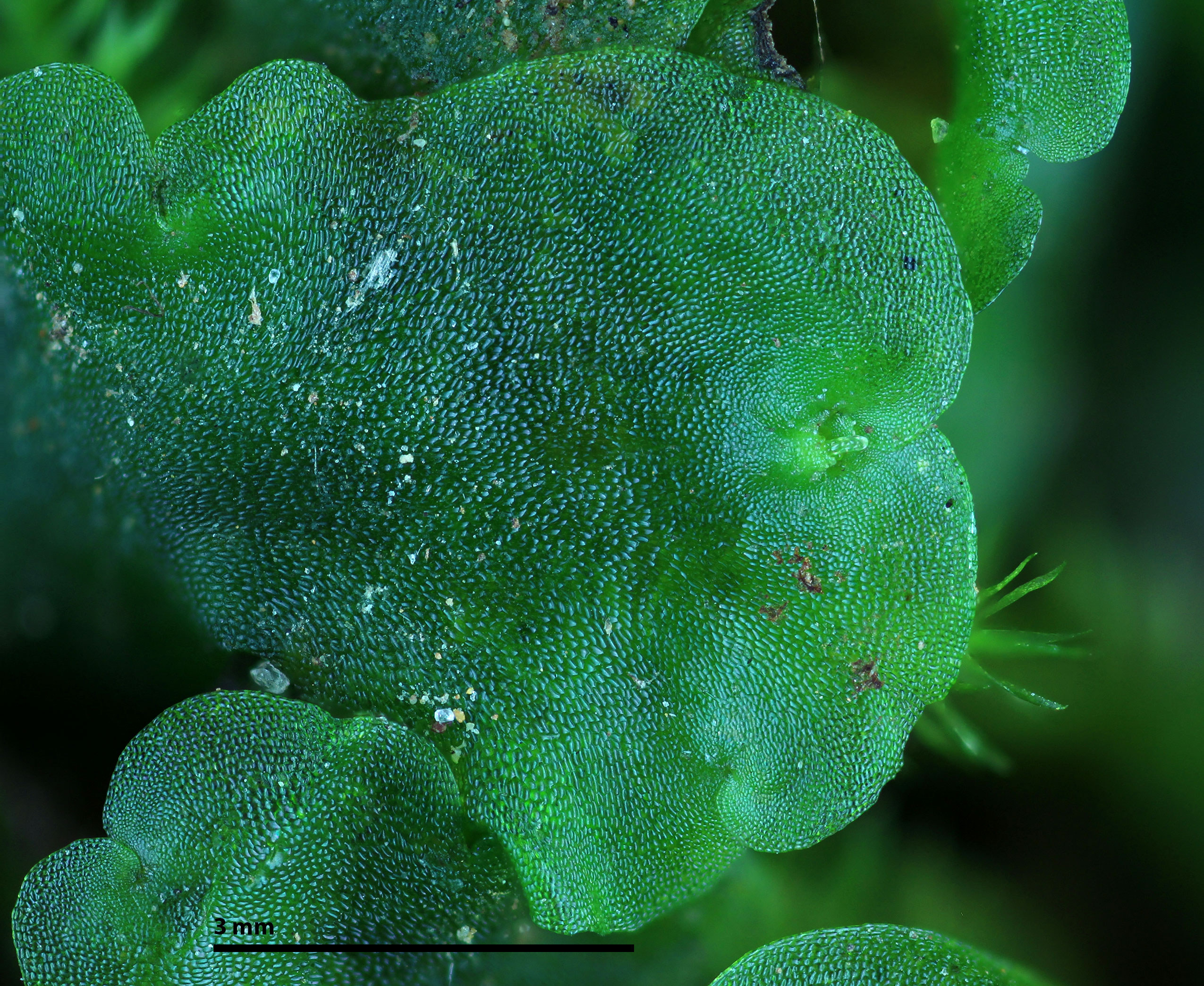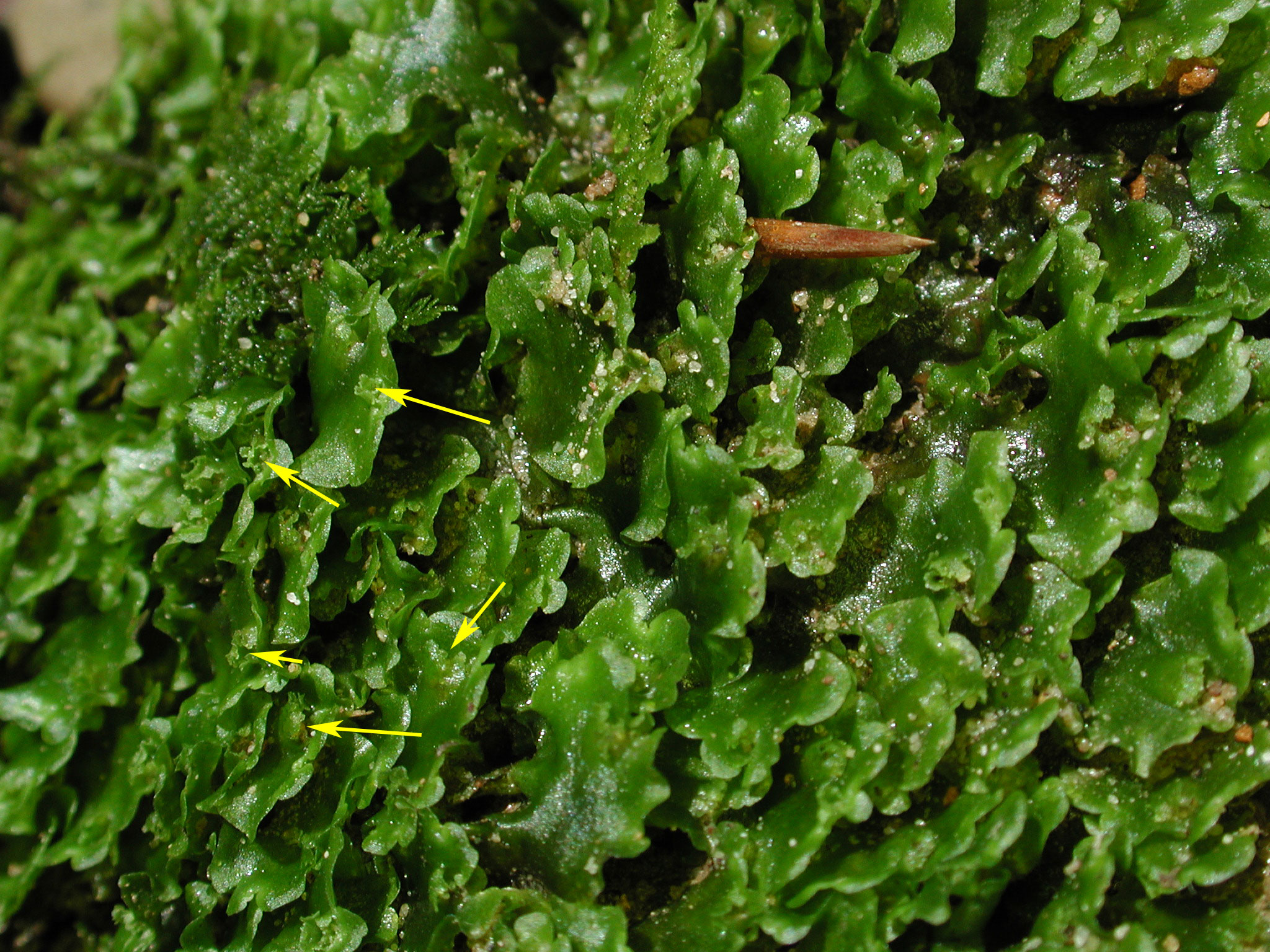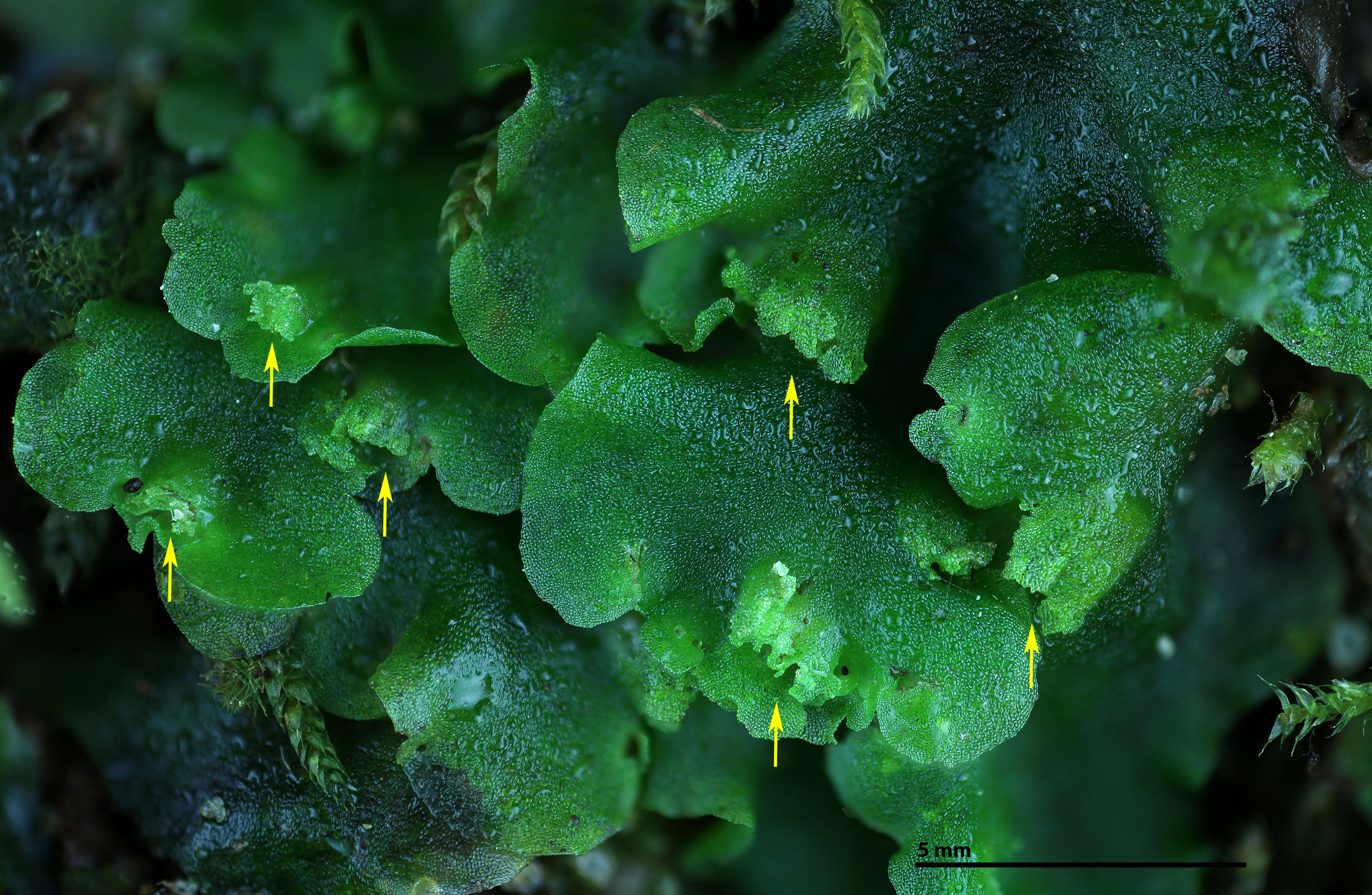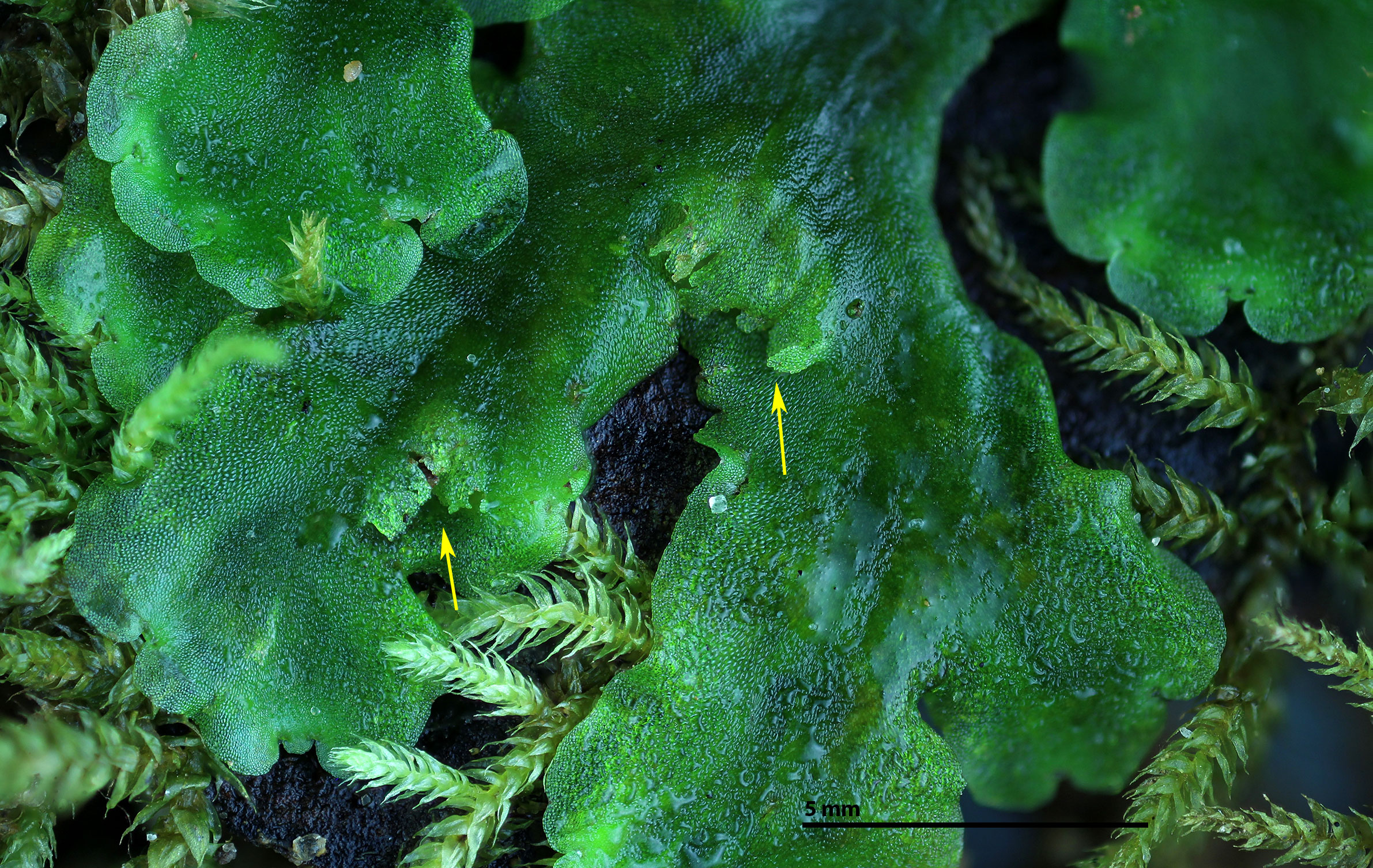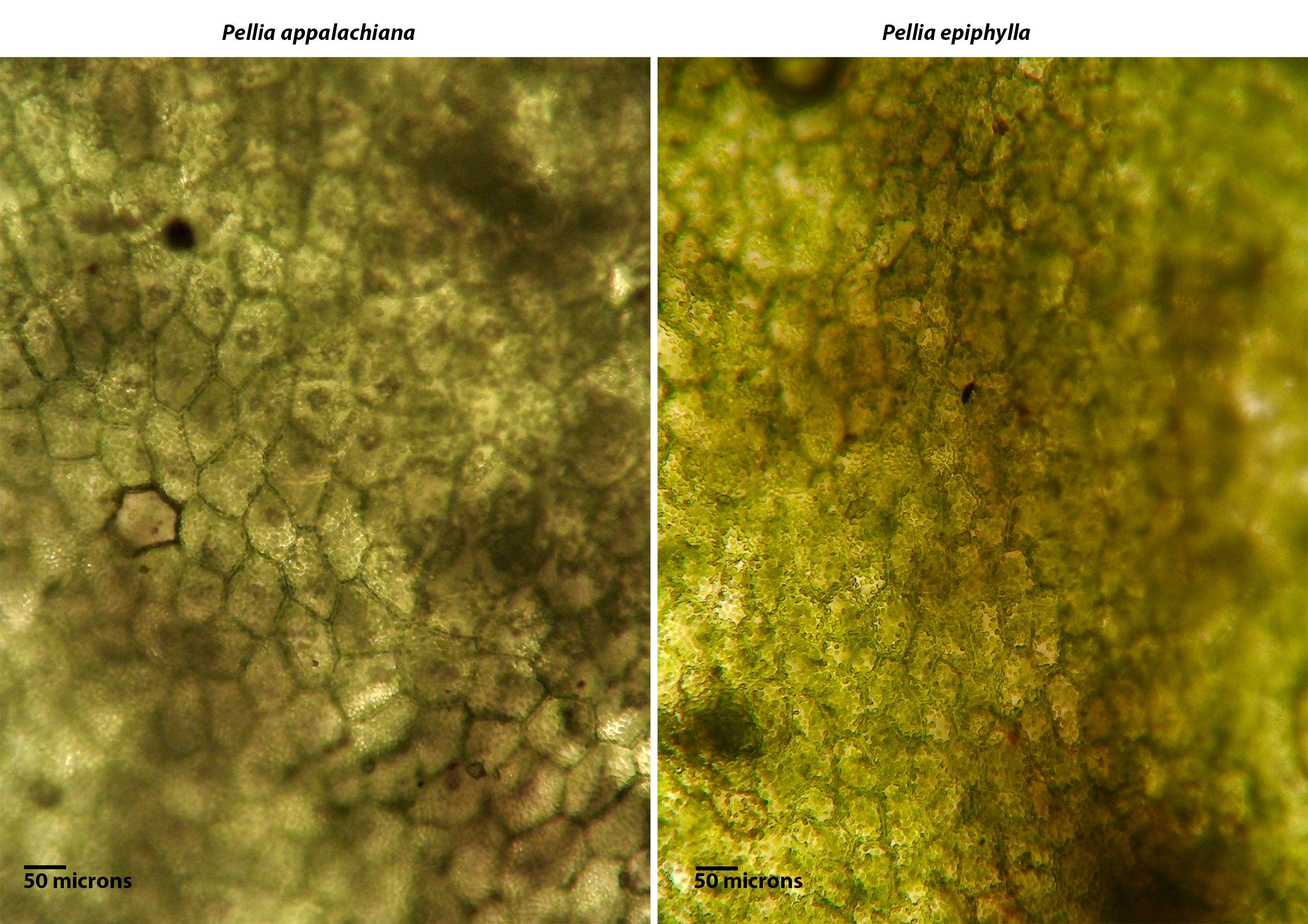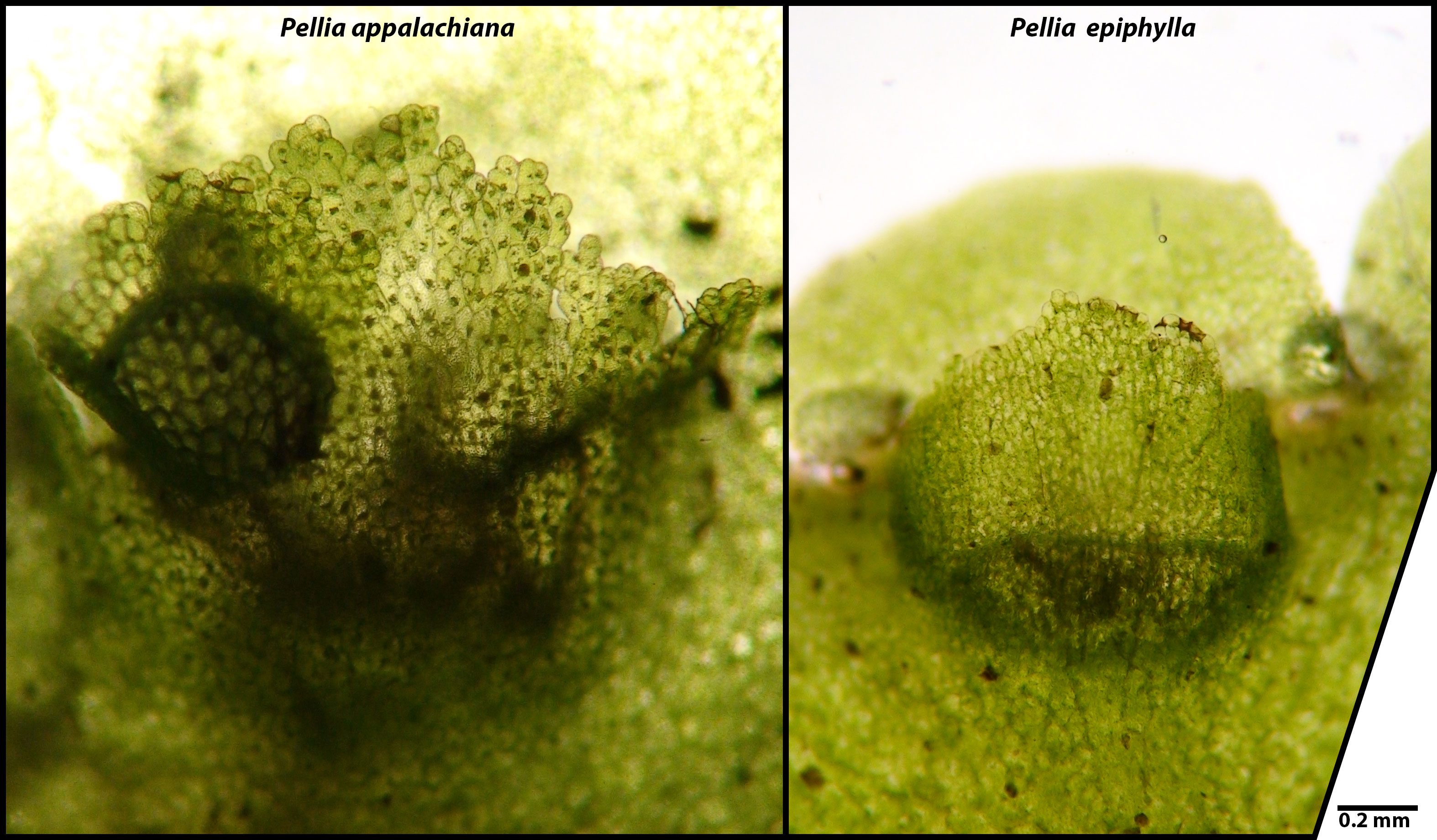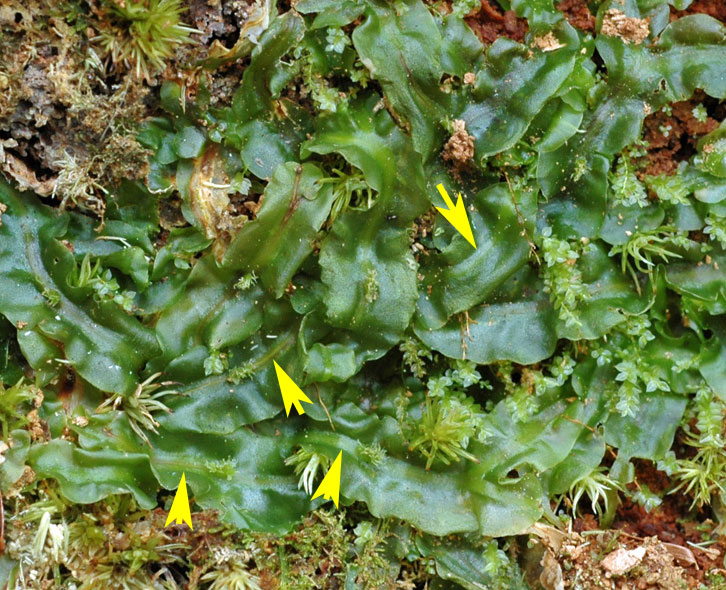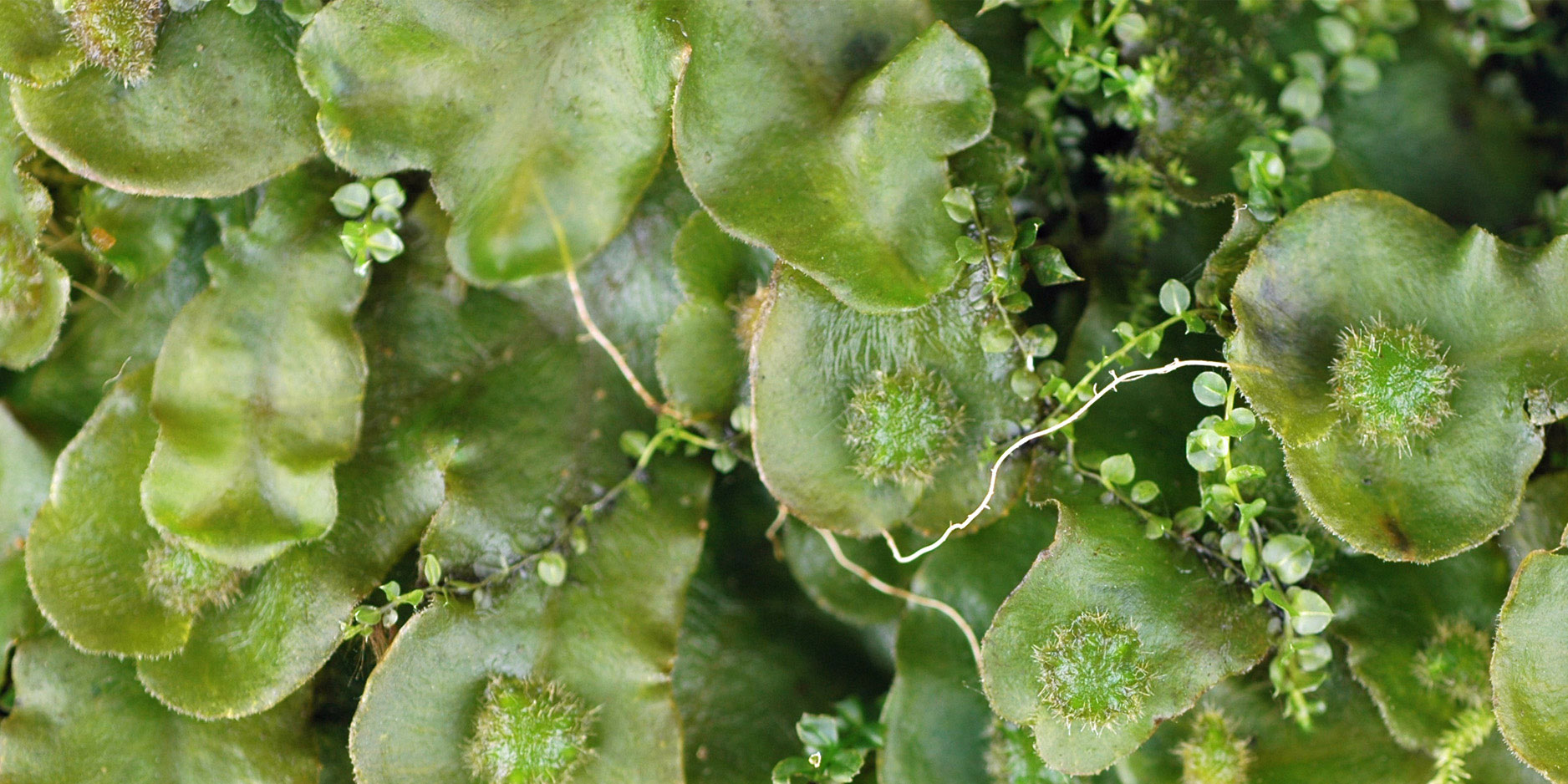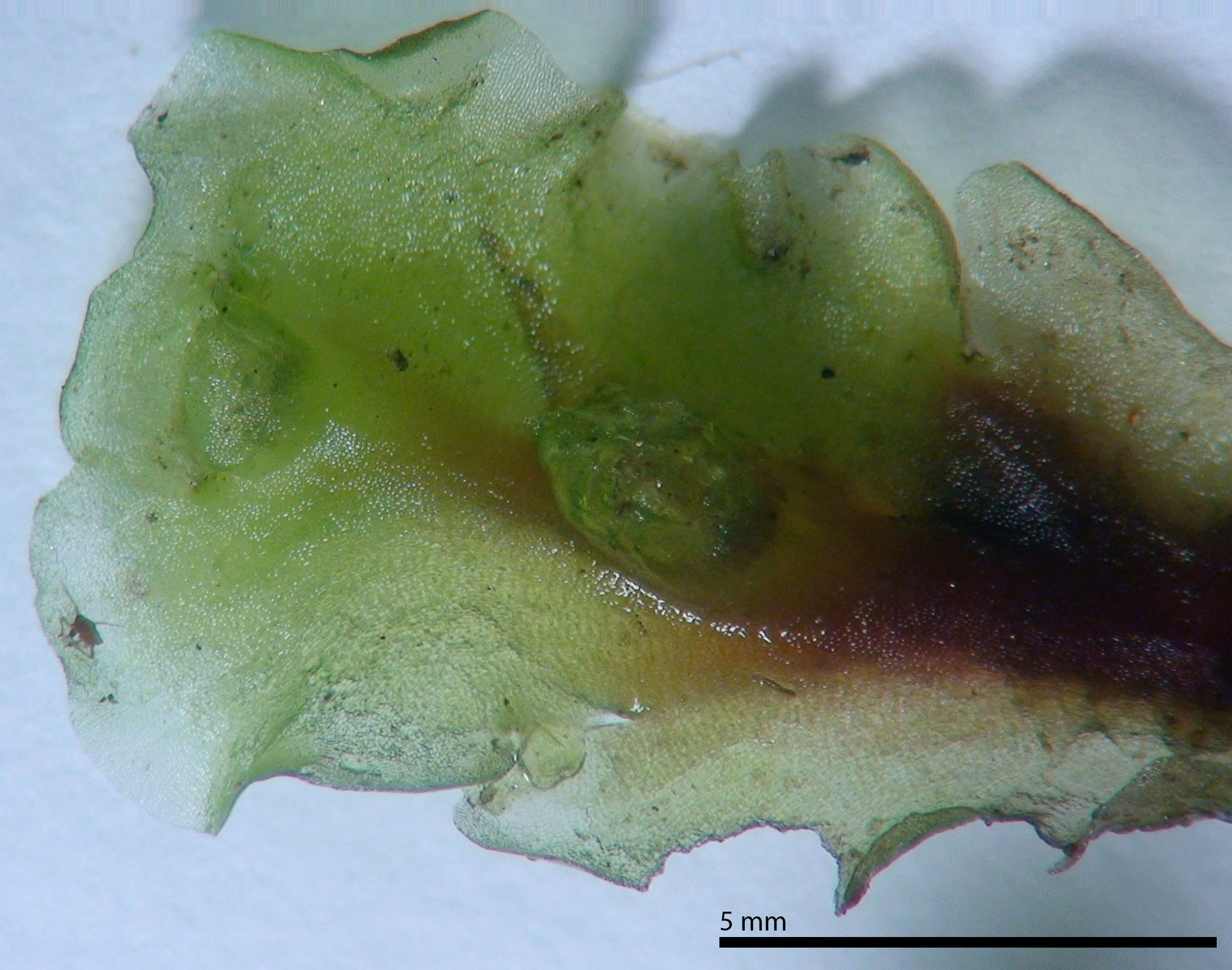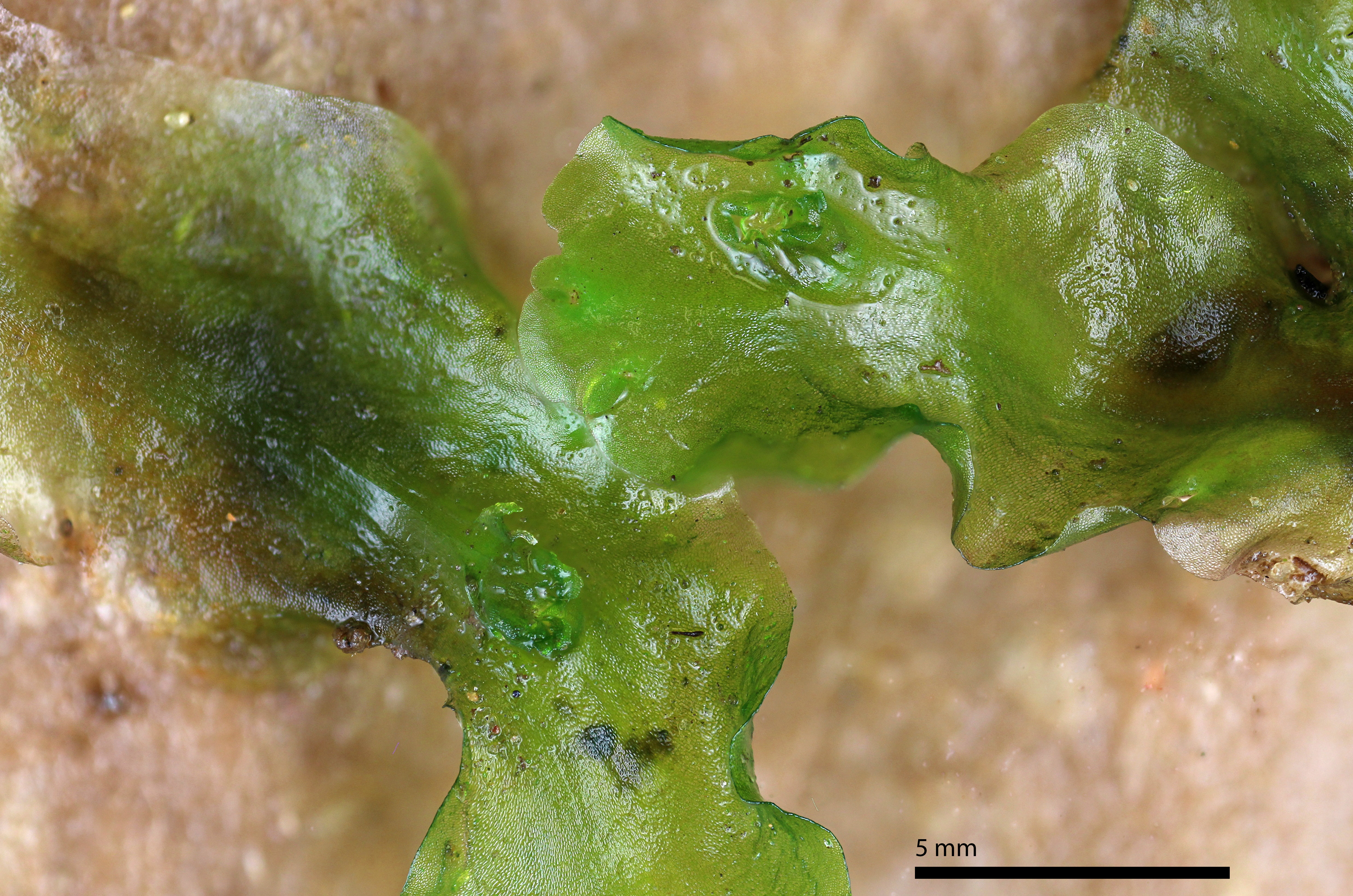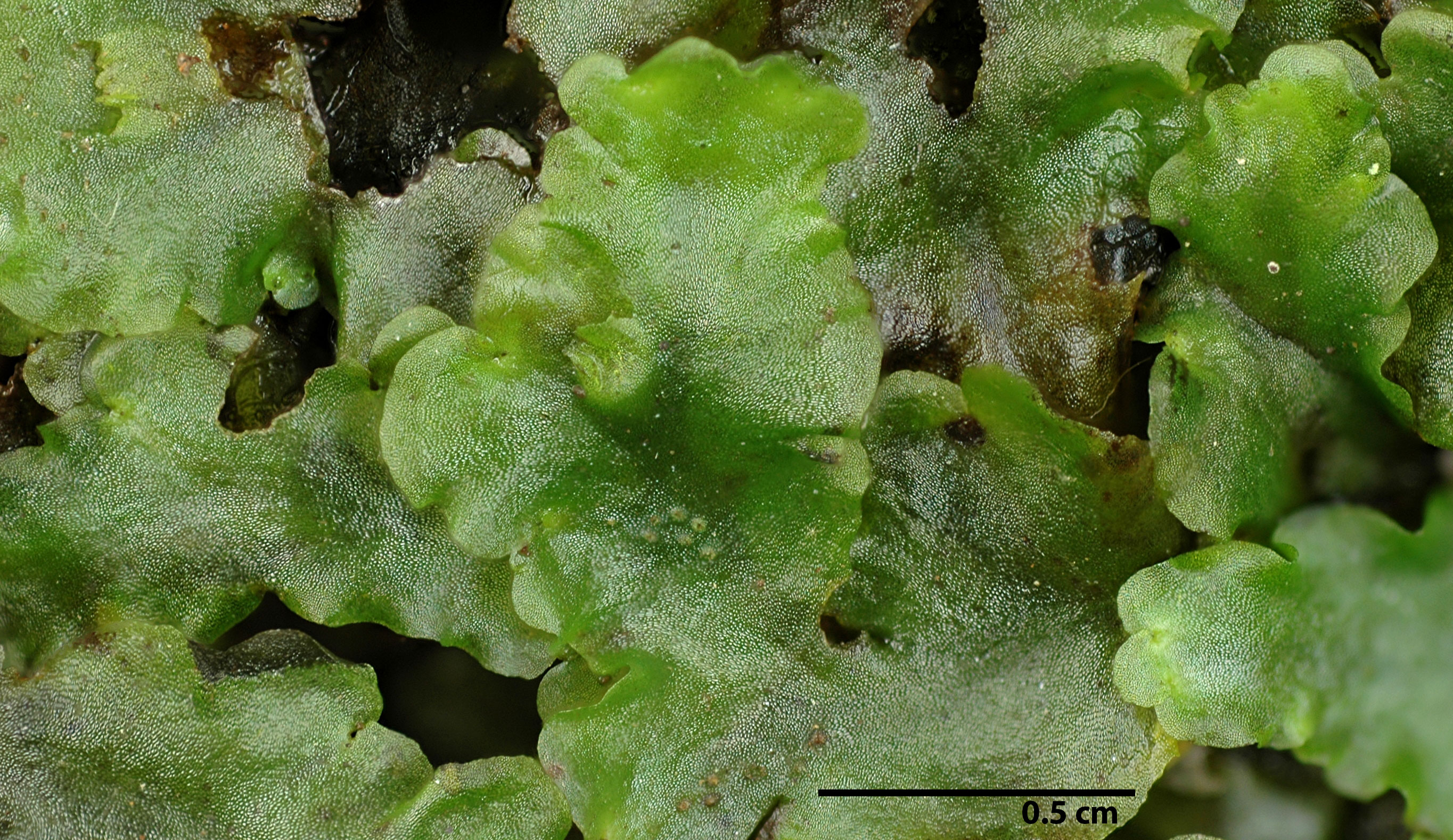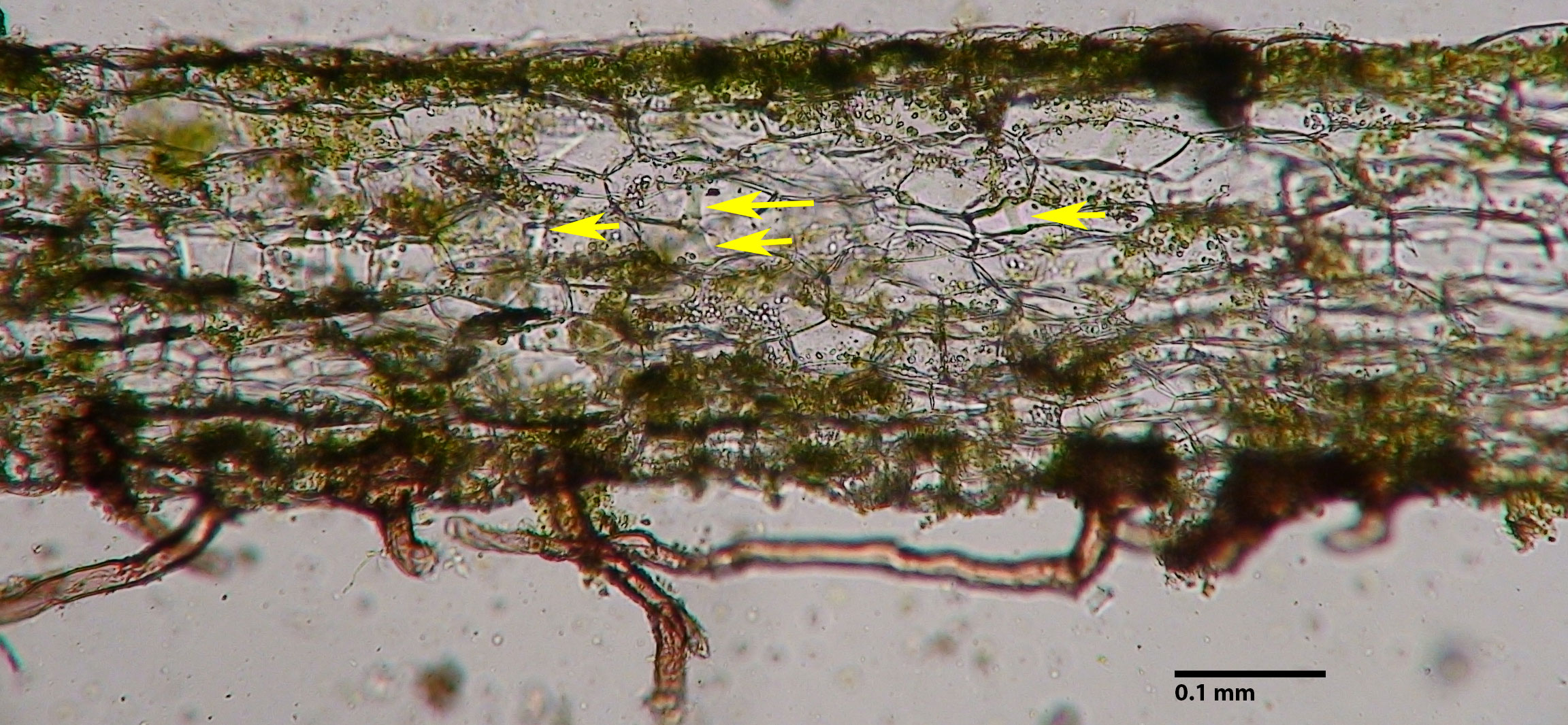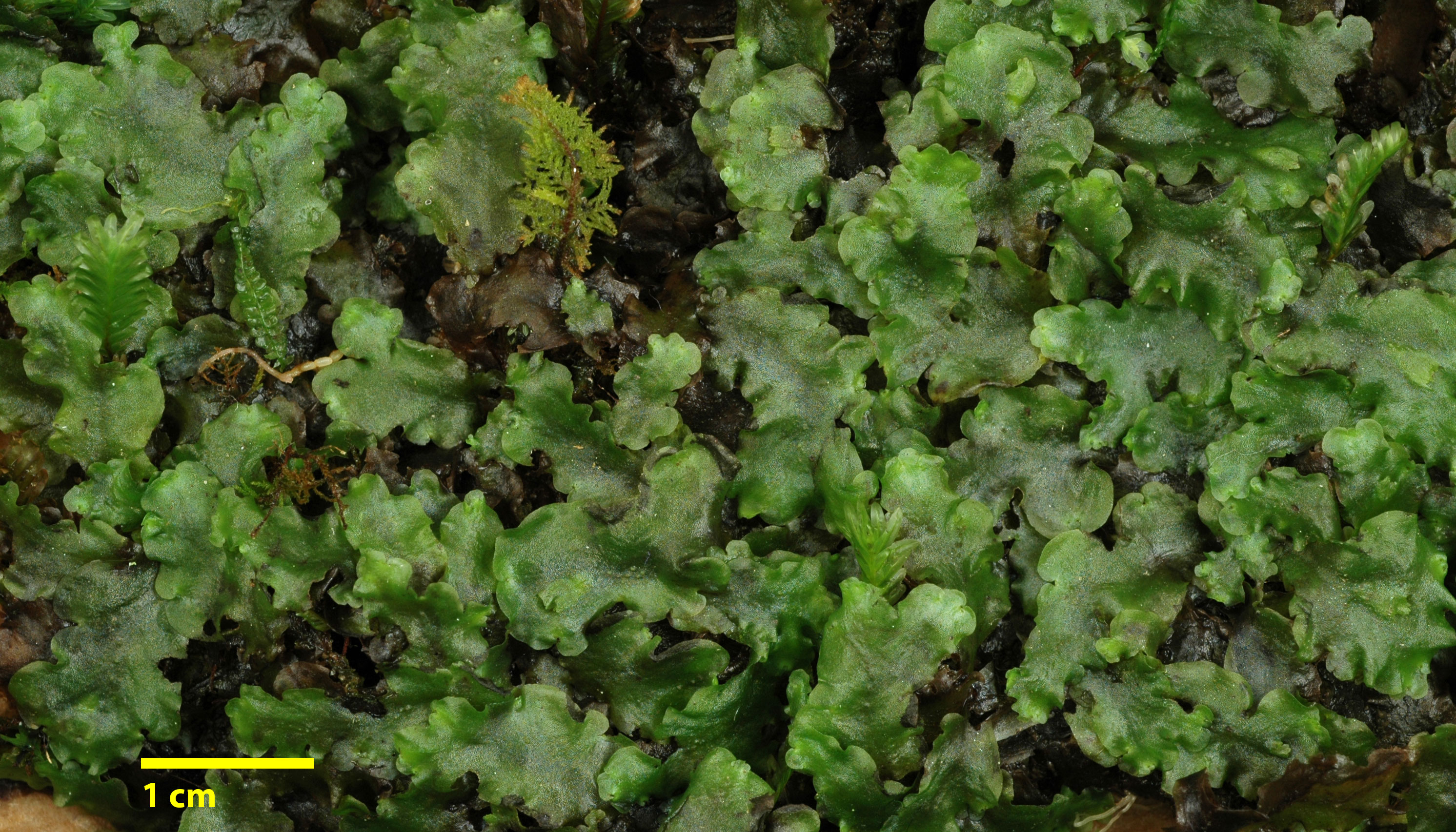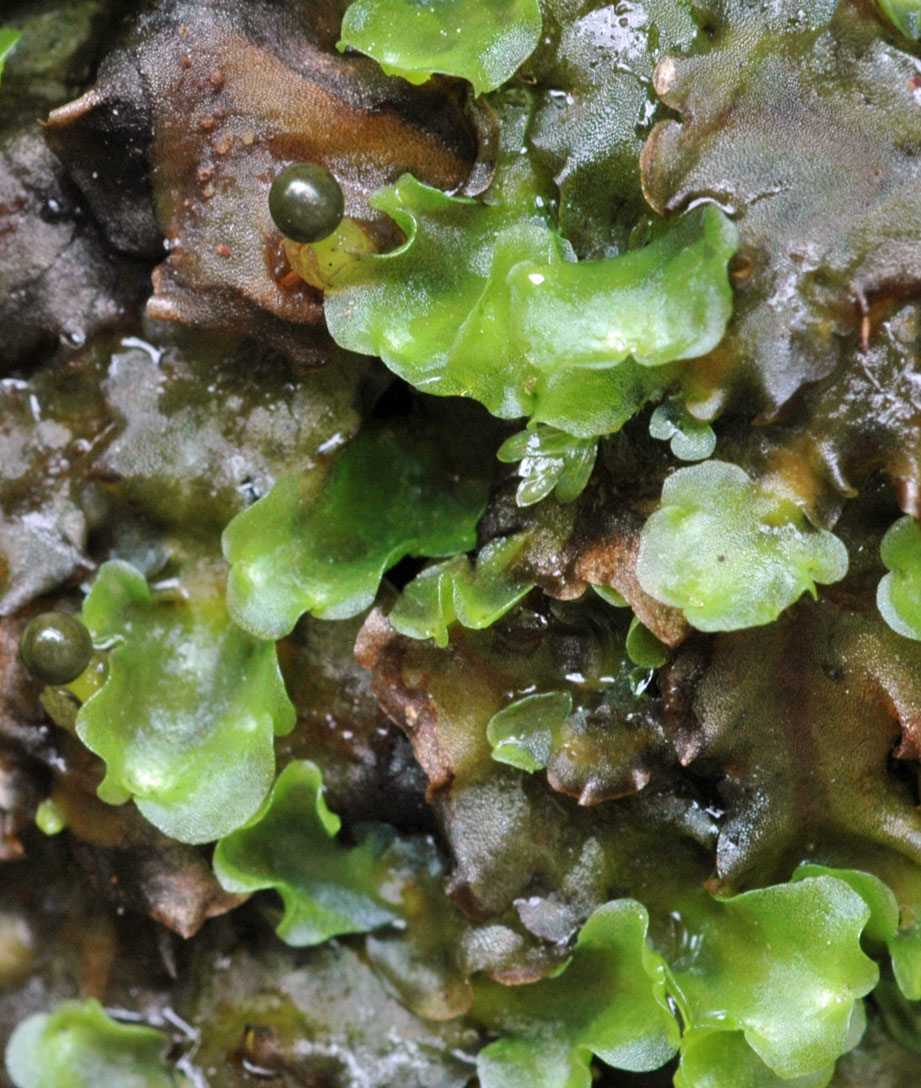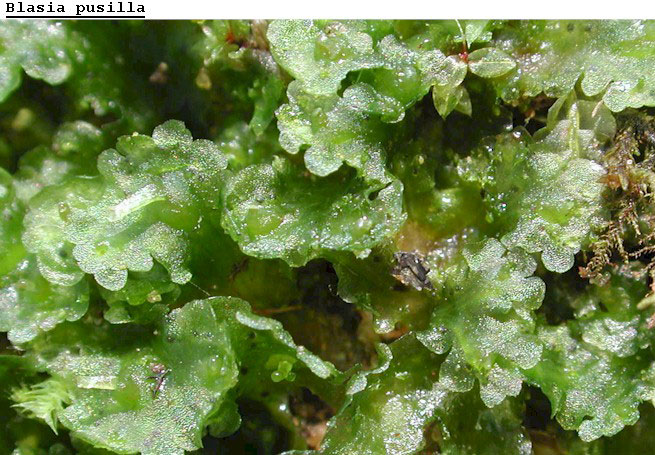Pellia appalachiana R.M. Schust. ex L. Söderstr., A. Hagborg & von Konrat
Family: Pelliaceae
Synonyms
None. In naming the species Schuster (1991, 1992) presented the name as Pellia X appalachiana indicating a hybrid origin. His failure to follow new rules of nomenclature (must indicate the herbarium for the type) resulted in the additional authors of the name (see Söderström et al. 2013).
NatureServe Conservation Status
G4
Distribution
Endemic to southeastern U.S.A. Alabama, Georgia, Kentucky, North Carolina, South Carolina, Tennessee. Pellia appalachiana occurs broadly in the southeastern U.S., without affinity to physiographic provinces. Schuster (1992, p. 472) mentioned “possibly similar plants have been seen once, in eastern Minnesota (Schuster 1991a)" [Unfortunately this work was never published.]. Given an increase in critical collecting, it may well be that Pellia appalachiana will prove to be widely distributed in the Midwestern and Northeastern U.S. [The species was not named until 1991 and since then almost all records on the bryophyte portal throughout the known range are those of a single collector, P.G. Davison.]
Habitat
“There is nothing distinctive about the ecology of this plant as compared with the common Pellia epiphylla” (Schuster 1992, p. 473). The three species of Pellia known to occur in the southeastern U.S. (P. appalachiana, P. epiphylla, and P. neesiana) are ecologically similar in their habitat requirements. Each species is intolerant of desiccation and seems to thrive in microhabitats prone to periodic disturbance. This includes stream banks under the influence of episodic scouring events and muddy/rocky shelves associated with waterfalls. When growing on vertical surfaces along streams or at the base of rock shelters, mature mats may eventually slough off making way for early successional colonization from locally dispersed spores. The muddy/rocky floor of wet, sandstone rockhouses is a frequent habitat of the species in parts of northern Alabama. All three species are known to occur sympatrically in at least two locations (Dry Falls, Macon Co., N.C., and Hemlock Bluff, Wake Co., N.C., see Schuster 1992). Except for the occurrence at Dry Falls, elev. ca. 3300 ft,, all other known occurrences are below 2500 ft in elevation.
Almost always occurring in close association with the far more freqeunt P. epiphylla, but apparently unable to colonize "weedy" habitats such as suitably moist and shaded road cut banks and ditches where P. epiphylla often prospers as an aggressive colonizer.
Brief Description and Tips for Identification
Similar to P. epiphylla and P. neesiana. Plants are thalloid, ribbon shaped, up to 1 cm wide and several cm long, furcately branched, occasionally rosette forming, more frequently forming broad mats, thalli overlapping, green, with red pigment when sun exposed. In published descriptions the thallus of Pellia is described as having a costa (midrib); however, the costa is not sharply demarcated and is "rather ill-defined" (Schuster 1992, p. 436). In Pellia the costa refers to the thickened region that runs down the middle of the elongate thallus. Laterally, the costa thins merging with the thallus wings.
Dioicous. Archegonia (and subsequent, developing sporophyte) located on the dorsal surface of the thallus, protected by a posterior flap (a.k.a. involucre, perichaetium, pseudoperianth). Antheridia sunken in dorsal pustules scattered or clustered along the thallus midline.
Features to find for confident identification of Pellia appalachiana are: 1) absence of male structures on plants bearing female structures, and 2) the female involucre extends from a posterior-only position behind the archegonial cluster, AND 3) the female involucre is lobulate-incised, the short lobes often flaring and standing nearly erect. The first character is shared with P. neesiana and male plants of the two species are indistinguishable (Schütz et al. 2016). The second character is shared with the monoicous P. epiphylla. The third character, in combination with the first, is most critical. New growth in the spring typically lacks reproductive structures, thus older thalli possibly buried within the mat collected should be studied.
Differing from both P. epiphylla and P. neesiana in the apparent absence of thickened bands associated with the cell walls within the costa (thickened midregion) of the thallus. The bands are illustrated below for Pellia epiphylla. The presence of thickened bands in any species may depend of the robustness of the midthallus region. This character deserves further study. If reliably found in thin forms of P. epiphylla and male plants of P. neesiana, the absence of thickened bands may be used to reliably distinguish male plants of P. appalachiana. Paton (1999) described both P. neesiana and P. epiphylla in the British Isles as having thickened bands or their thickened bands may be scarce or absent.
There may be distinctions in cell size between our southeastern species of Pellia, but the potential for size overlap and atypical dimensions when growing under particularly wet conditions, makes cell size less than an ideal marker. In plants found growing together, the cells of P. appalachiana are clearly larger than those of P. epiphylla.
While Schuster (1992) emphasized P. appalachiana was likely a hybrid between P. epiphylla and P. neesiana, there is evidence that this is not so (see Natcheva, & Cronberg 2004).
Salient Features
- Dioicous
- Female involucre a posterior flap
- Mouth of the female involucre lobulate-incised, often flaring, ascending
- Cells along the midline of the thallus 55-71 microns wide, larger than those of P. epiphylla (36-50 microns wide) (“median cell” measurements from Schuster 1992).
References
Natcheva, R., & Cronberg, N. 2004. What do we know about hybridization among bryophytes in nature?. Canadian Journal of Botany, 82(12), 1687-1704
Paton, J.A. 1999. The Liverwort Flora of the British Isles. Harley Books, Martins, England
Schuster, R. M. 1991. Diagnoses on new taxa of Hepaticae-1-Jungermanniidae. Journal of the Hattori Botanical Laboratory, (70), p143-150
Schuster, R.M. 1992. The Hepaticae and Anthocerotae of North America East of the Hundreth Meridian Volume V. Field Museum of Natural History, Chicago
Schütz, N., Quandt, D., & Nebel, M. 2016. The position of the genus Apopellia stat. nov. within the Pelliales (Marchantiophytina: Jungermanniopsida). Taxon, 65(2), 221-234
Söderström, L., Hagborg, A., & Von Konrat, M. 2013. Notes on Early Land Plants Today. 19. Validation of two names in Pellia (Pelliaceae, Marchantiophyta). Phytotaxa, 76(3), 39-40
Habitat
Habitat
Habit
Habit
Morphology
Morphology
Morphology
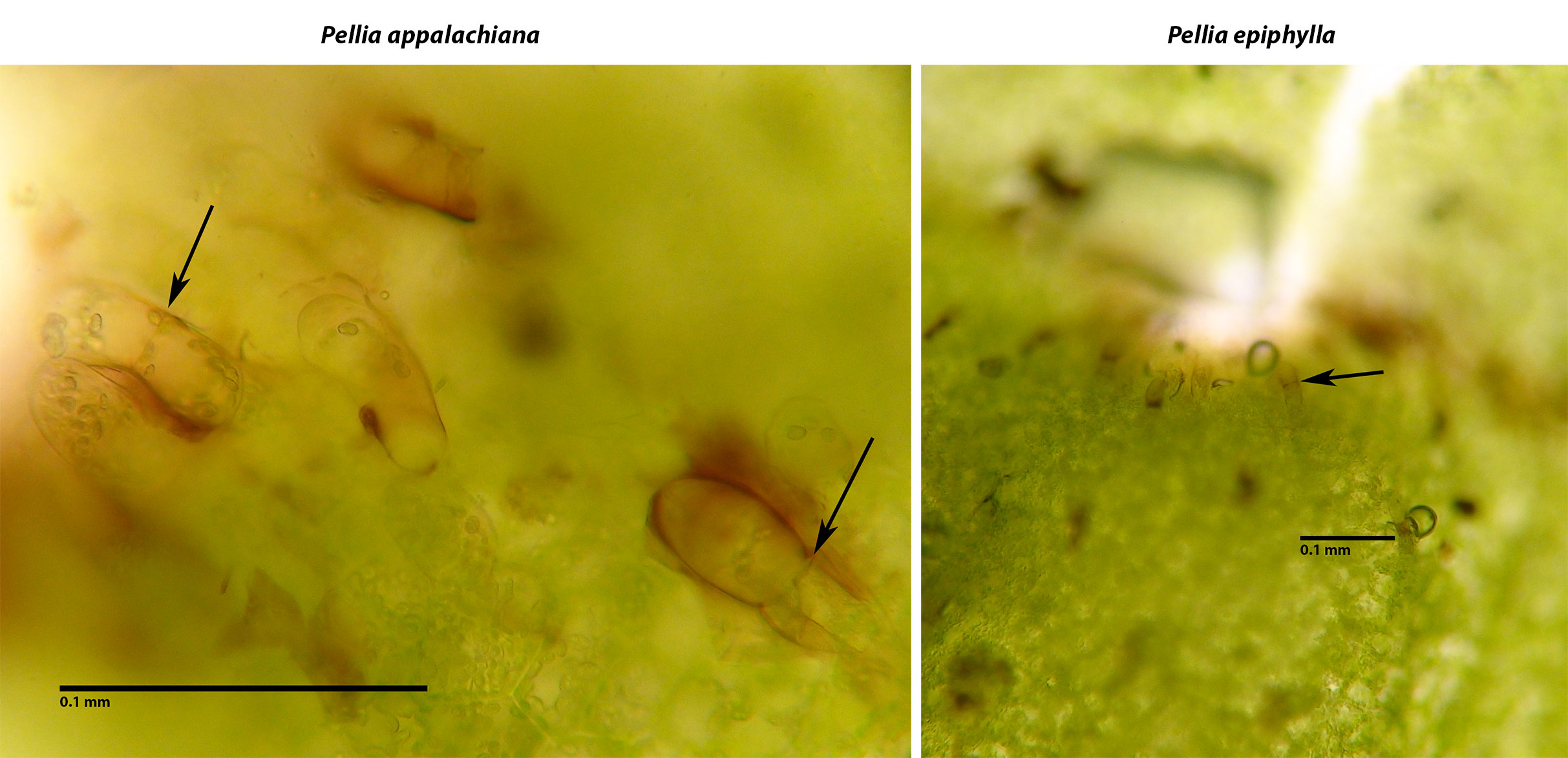
Pellia appalachiana
Stalked slime papillae on the ventral thallus near the notch of the growing apex; arrows indicate the crosswall between the stalk and the terminal cell. The images above capture the difficulty you may have in demonstrating this character. The two-celled slime papillae are useful to rule out thalli of Aneura where slime papillae are one celled and sessile.
Similar Taxa
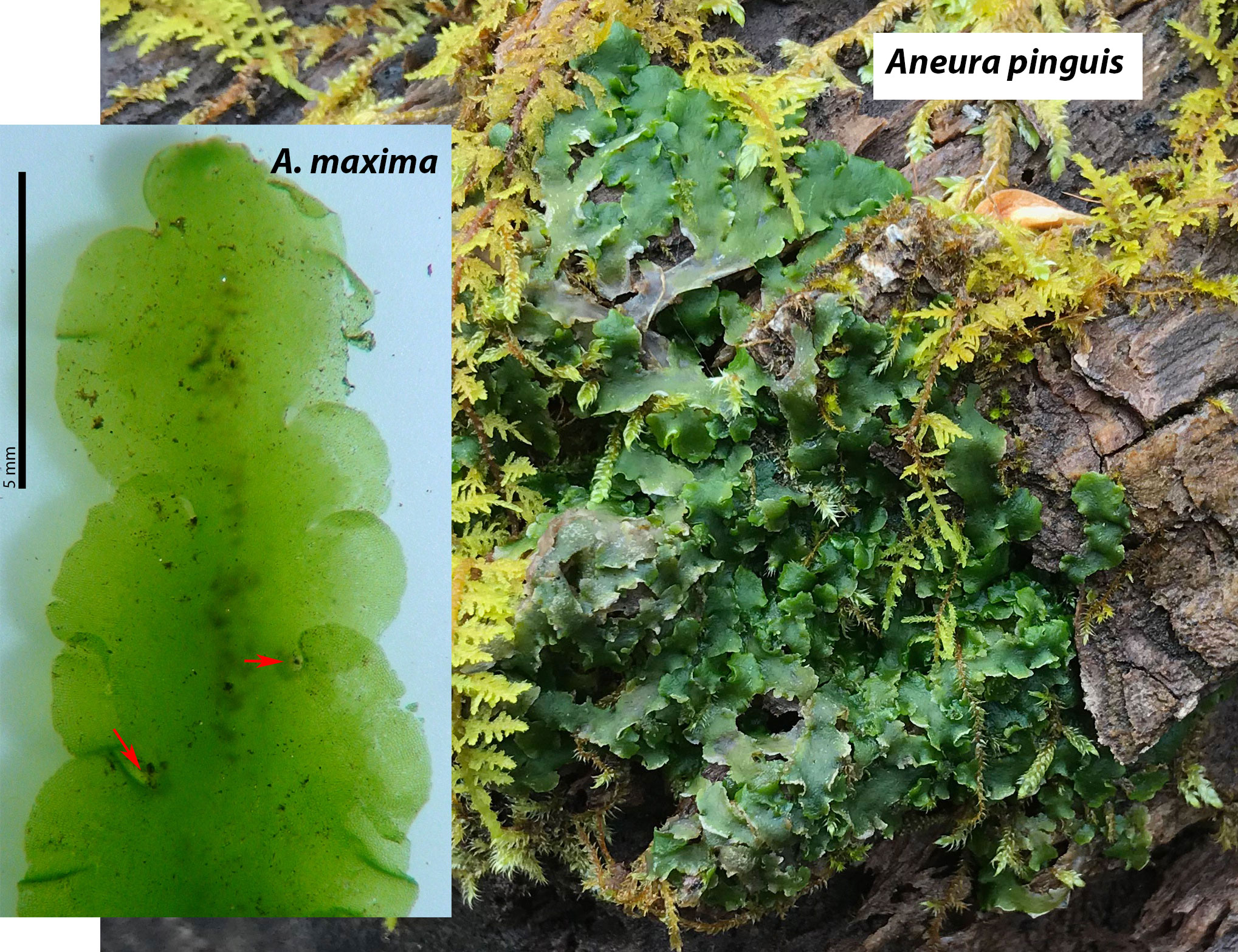
Aneura
Aneura does occur admixed with Pellia in wet, seepy habitats and sterile thalli of the two genera can be troubling. While tedious to demonstrate, the apical notch of Aneura is protected ventrally by single-celled, sessile slime papillae while slime papillae of regional Pellia are two celled (the papilla cell subtended by a stalk cell). Pellia prefers mineral substrates and would not be found on non-silt covered logs, a common substrate for Aneura as shown above. Red arrows on the inset indicate the lateral position of archegonial clusters.
